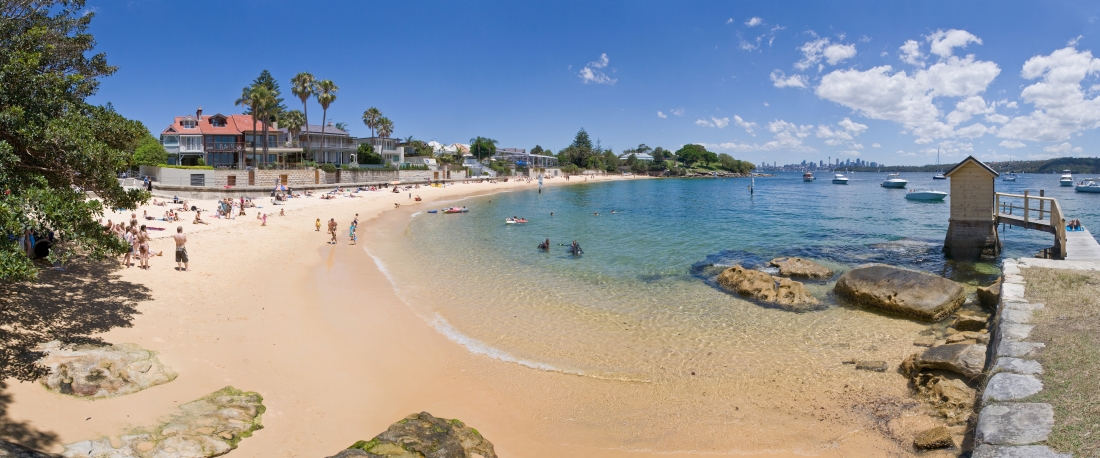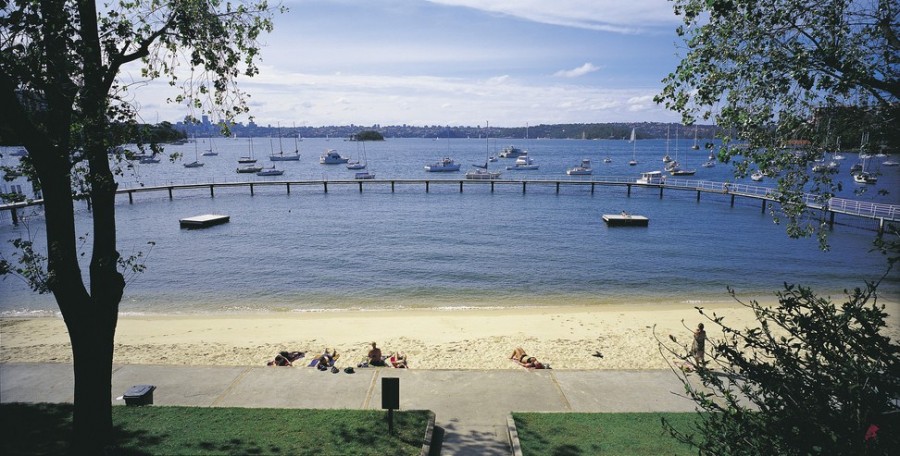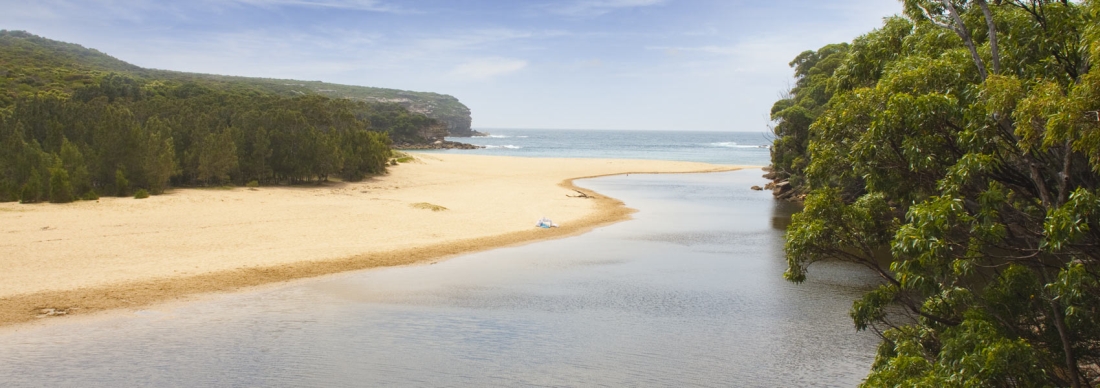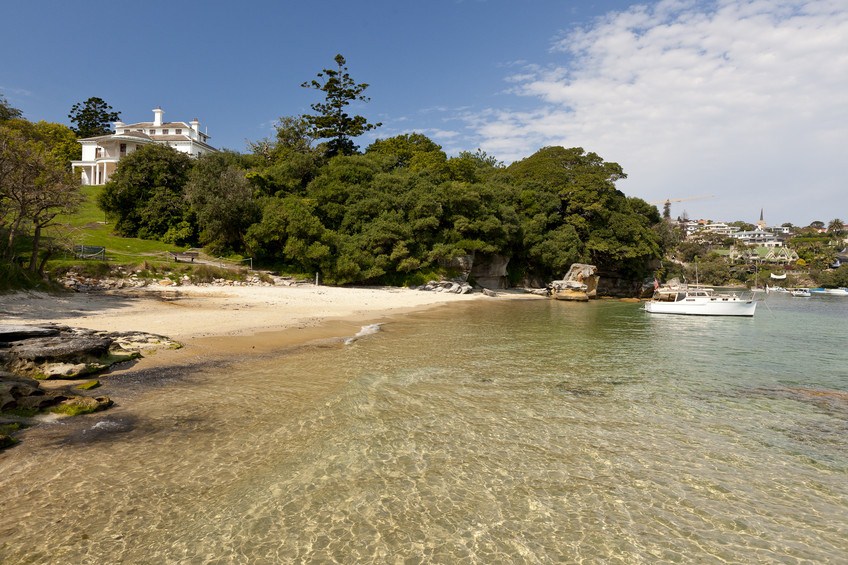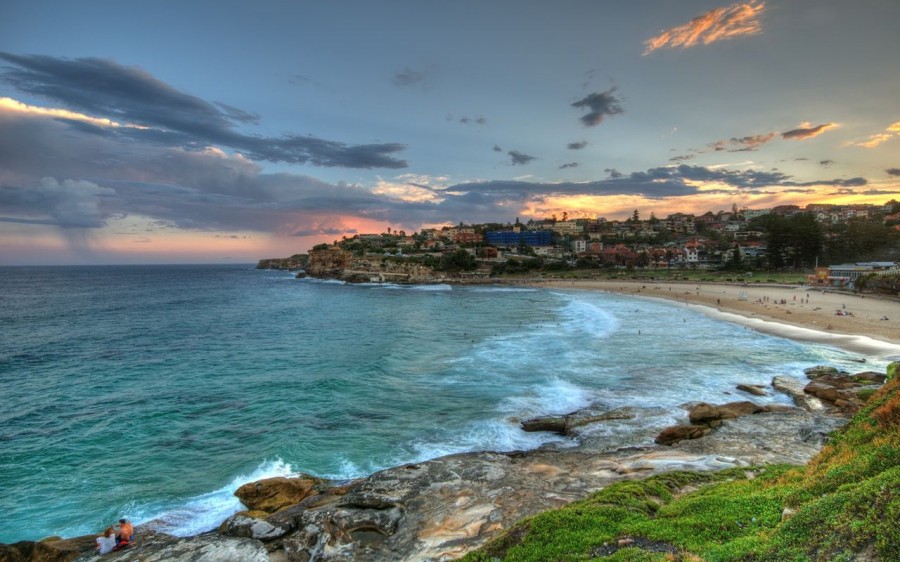The post Sailing the Greek Islands (Yoga, Hiking and Wine Included) appeared first on The Expeditioner Travel Site.
]]>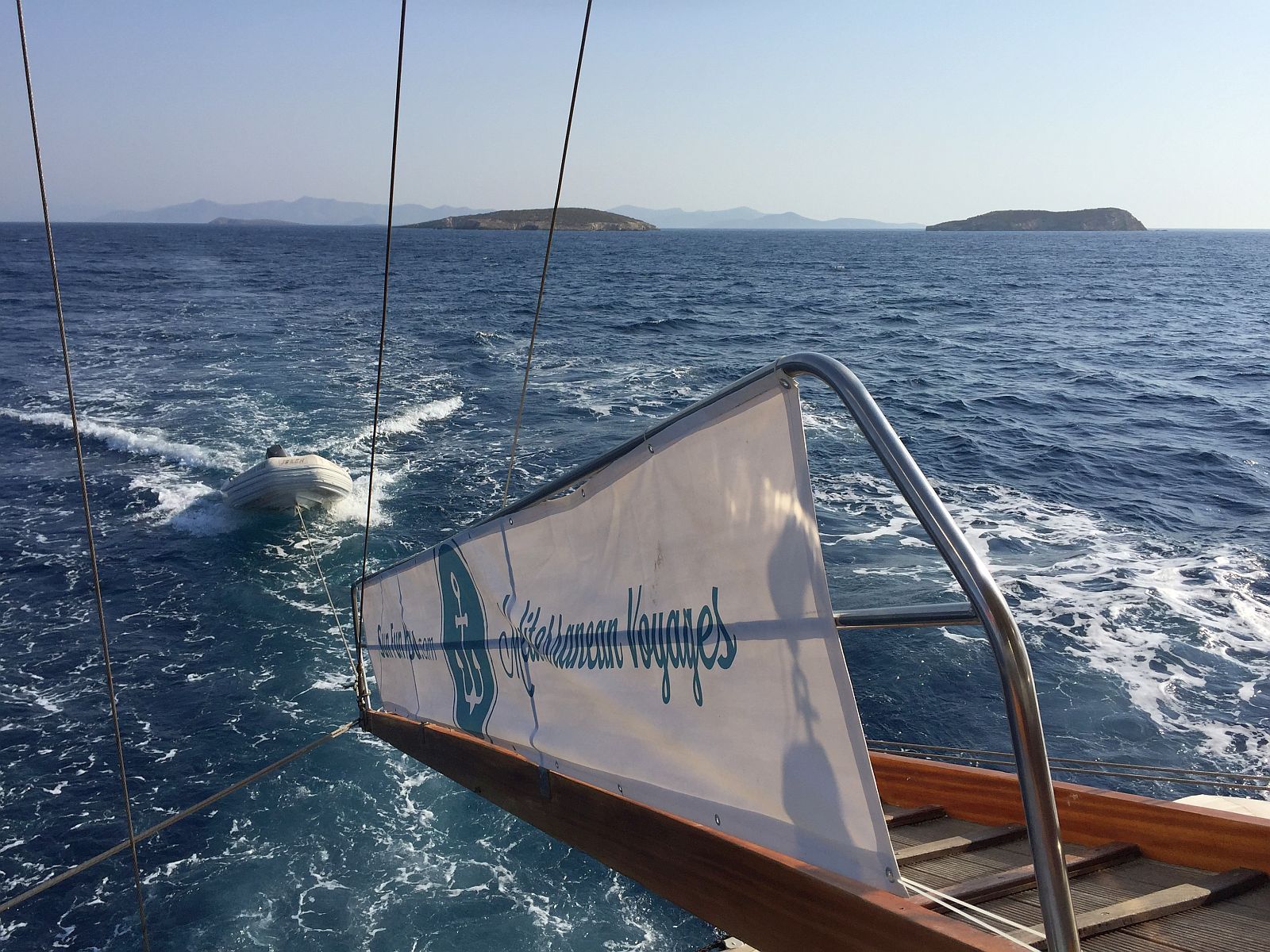
As our boat sailed out of the ancient Greek island harbor of Kos, our group of 10, mostly strangers, sat in a circle around a long, wooden table, studying a map spread out before us depicting the Dodecanese, the group of islands clustered together in the southeastern Aegean Sea. Our tour guide for the trip, Ali, was pointing out the various islands we were to visit over the next week.
“Today will be the longest sail,” he explained in a slow cadence, something we would get used to hearing after breakfast every morning as he announced the forthcoming day’s itinerary. “We are heading north to Patmos. From there we will turn around and visit many islands along the way until we come back to Kos. Of course, we will be doing many hikes and other physical activities along the way.”
My eyes wandered along the names of islands he was pointing to: Pserimos, Kampos, Patmos, Lipsi, Leros, Kalimnos. These were not the names of islands one sees on the cover of glossy brochures luring tourists to the Greek Islands or hears about over holiday dinners from distant relatives when discussing their summer trip.
No, this is officially off-the-beaten-path territory when it comes to the Greek Islands — at least for most tourists. For those who have spent time in the country, partying it up in Mykonos or wandering shoulder-to-shoulder with the crowds through the streets of Santorini, these are the islands one visits to see the other side of Greece. These are the islands where fisherman outnumber tourists on most days, where you’re more likely to run into a stray sheep than a stag party, and where traditions have continued uninterrupted for many millennia. This was the part of Greece I was most excited to see.
After finishing his introduction, Aislyn, our physical trainer for the week, introduced herself. After learning a bit about each of our fitness levels, she then announced that our first workout of the trip would be commencing shortly at the bow of the boat. “Don’t forget to bring your resistance bands that were in your welcome bag when you arrived!”
It goes without saying, this was not going to be your typical Greek island cruise.
It was the middle of September, and we had signed up with Sun Fun You for their active 7-day Greek Islands Voyage trip. The plan was to start from Kos, head north to Patmos, then island-hop south until we arrived back in Kos, sleeping in various coves, ports and docks along the way.
Not one for sitting around idly during my travels (especially on a boat), I was particularly interested in the fact that Sun Fun You places a large emphasis on physical activities. Not only would each day include a morning and afternoon fitness session, but there were also half-day hikes planned for each island we would be visiting. This means rarely a day would go by without some sort of workout to get the juices flowing (and to work off the large amount of feta one tends to consume here).
Our boat for the week, the Muhtesem, was technically a gulet, the term for the two-masted wooden boats typically found in this part of the world. Gulets are known for their ornamental, dark-wood exteriors and long, flat decks. Most are hand-built in nearby Turkey, just as ours was. I later learned our Captain personally oversaw the construction of the particular gulet we were on.
On deck there was a large, flat expanse at the bow where most of the workouts took place, and at the stern was large table used for group meals and which was surrounded by padded seating, perfect for afternoon naps. Below deck were eight cabins with adjoining private bathrooms and a cozy living room/den with a library stocked with Mediterranean-themed books and DVDs (I was inspired to pick up a copy of Zorba the Greek toward the end of the week).
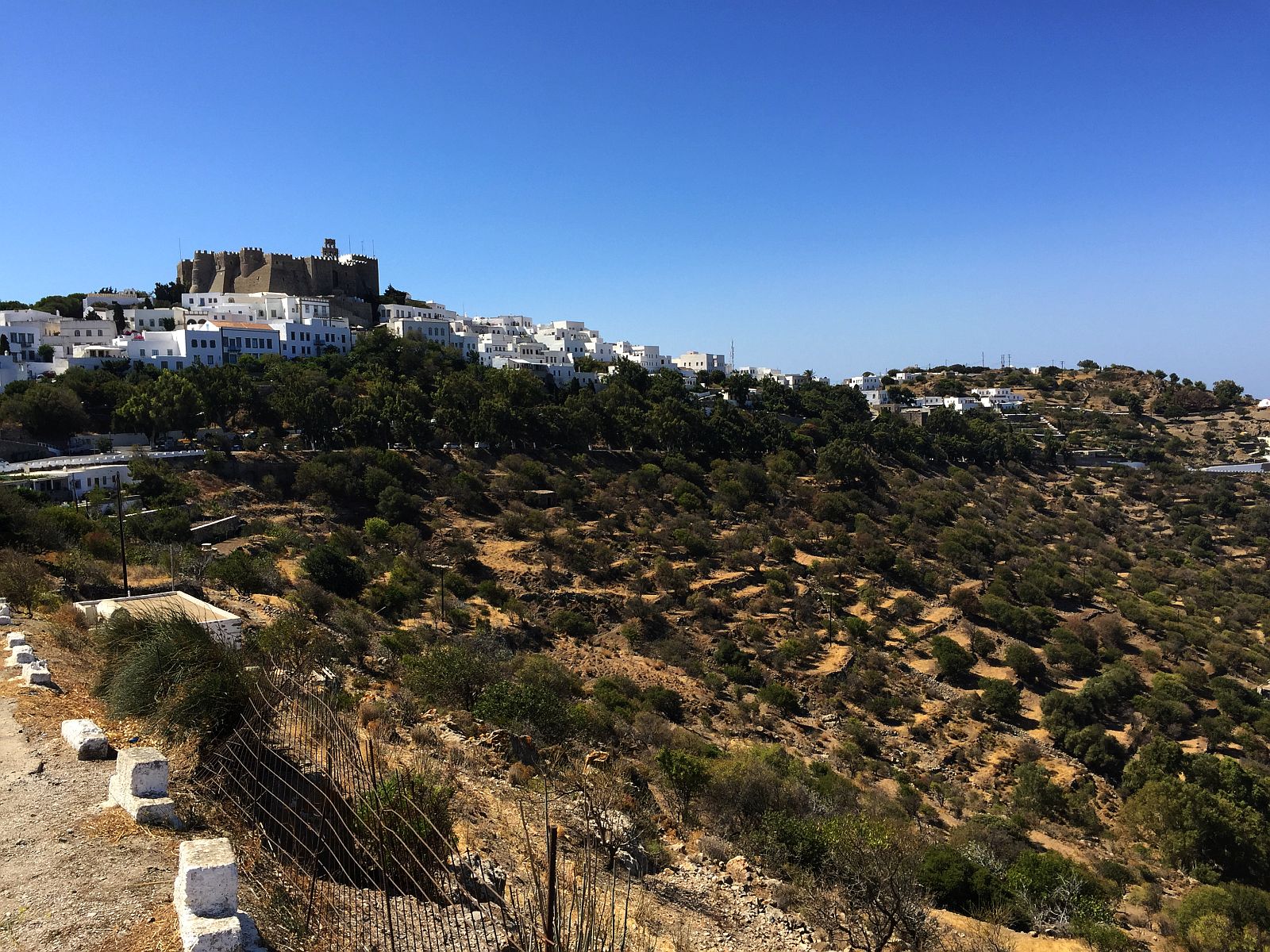
After our first humid night at sea, which resulted in half of the group taking their pillows and blanket outside to sleep, we arrived at our first stop, Patmos. Located on the northern tip of the Dodecanese, the island has a population of less than 3,000 and is well known in the Christian and Greek Orthodox religions as home to the Monastery of Saint John the Divine, the castle-like structure on a hilltop that is a pilgrimage site for many Christians.
After a short walk through the winding backroads of the town of Skala, Ali gathered our group at the base of the hill we would be ascending. “We are going to first visit the Cave of the Apocoloyps, the cave where it is believed John of Patmos — hidden away to avoid the detection of those hunting Christians throughout the region — wrote the Book of Revelation. Then we will head further uphill to the monastery. Please drink lots of water and don’t forget to put on your sunscreen!” Wise words as the early morning sun beat down, baking the parched land surrounding us. Ainslie then led us through a few stretches, and then we were off.
An hour later we arrived at the cave, a welcome respite from the heat due to its location in the side of the hill. After a visit to the austere chapel inside and a short break in the shade, we continued on, heading further uphill until the path ended at a set of large doors belonging to the monastery.
The monastery was initially built in 1088, and with its foreboding walls and numerous turrets, it appears to the naked eye more like a Byzantine castle than a church. Inside, an outdoor courtyard is surrounded by living space and a number of small chapels where the monks used to worship safely far from their prosecutors.
From the courtyard we took one last short walk up a steep staircase to the rooftop where we were treated to a panoramic view of the island below, our boat barely visible in the distance floating in the bay: a speck of brown in a shiny expanse of bright blue.
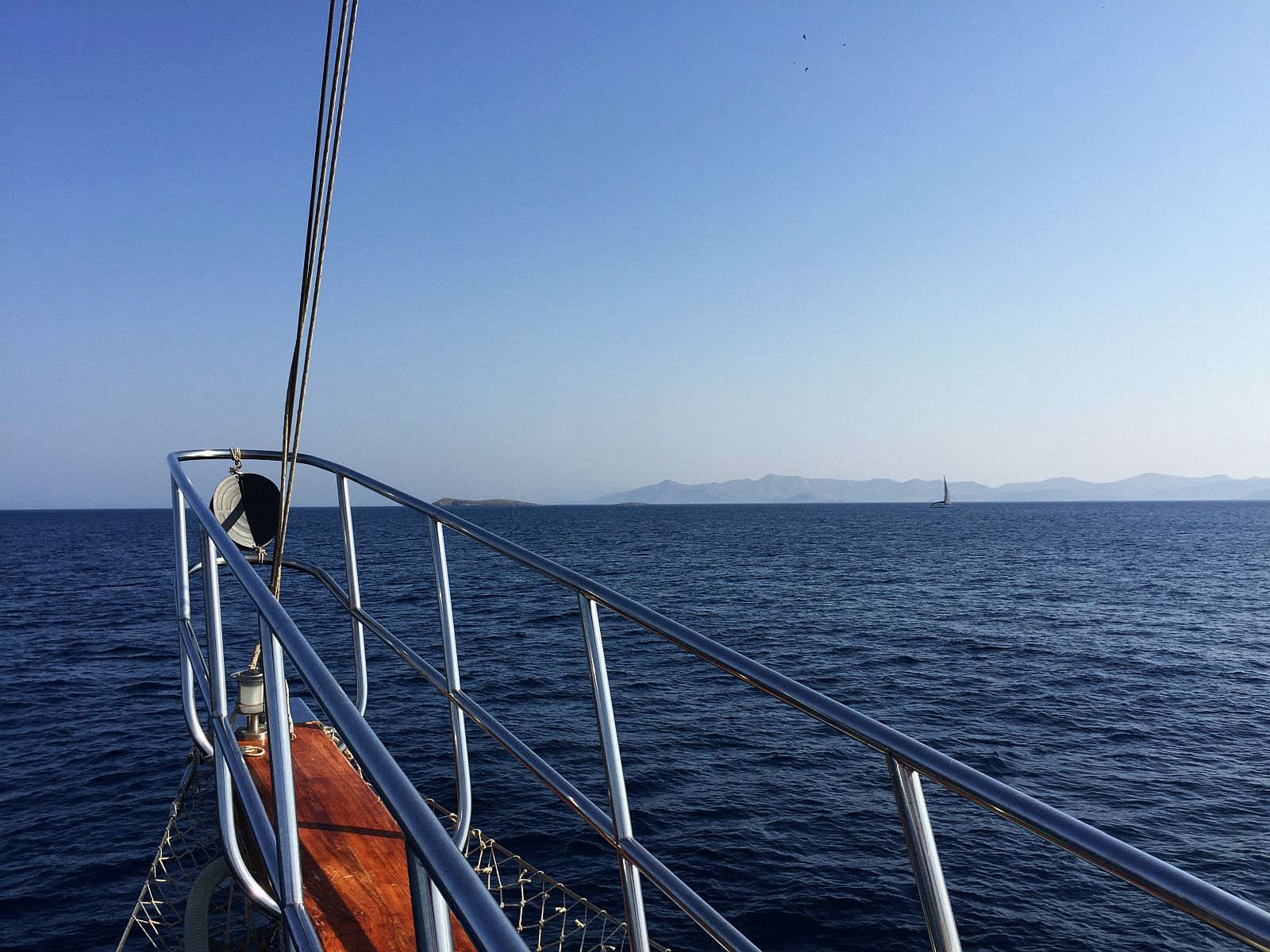
When out on the water, breakfast, lunch and dinner are all eaten family-style. The captain of the ship, with the help of a small crew, does double-duty as chef. Every meal was served with the obligatory Mediterranean accouterments including fresh bread, feta cheese, salad and a selection of olives, followed by our main meal and fresh fruit for dessert. Given the amount of calories each of us were burning each day, the sound of the bell being rung before every meal was usually followed by an ordered stampede of passengers eager to start digging in.
At night, after the table was cleared and drinks were topped off, we would break out a deck of cards, or more frequently, my recently purchased set of Cards Against Humanity, where we would play late into the night under a full set of stars and the sound of waves lapping against the boat’s hull.
One night, after most everyone had gone to sleep, I stayed up late with the boat’s crew drinking cans of Mythos and downing the occasional shot of raki, the anise-flavored liquor popular in this part of the Mediterranean. I asked the captain about the history of the Muhtesem. He explained that he actually owned the boat and helped to oversee its construction which was done using traditional techniques by boat-makers who can trace their trades back generations.
“After many years working as a chef in the kitchens of 5-star hotels, I finally quit my job to pursue my dream,” he explained, his eyes looking around at his prized possession. Later in the trip, I met his young daughter and wife who had come on board to visit, an infrequent event during the summers when he spends most of his time at sea at work in his new profession.
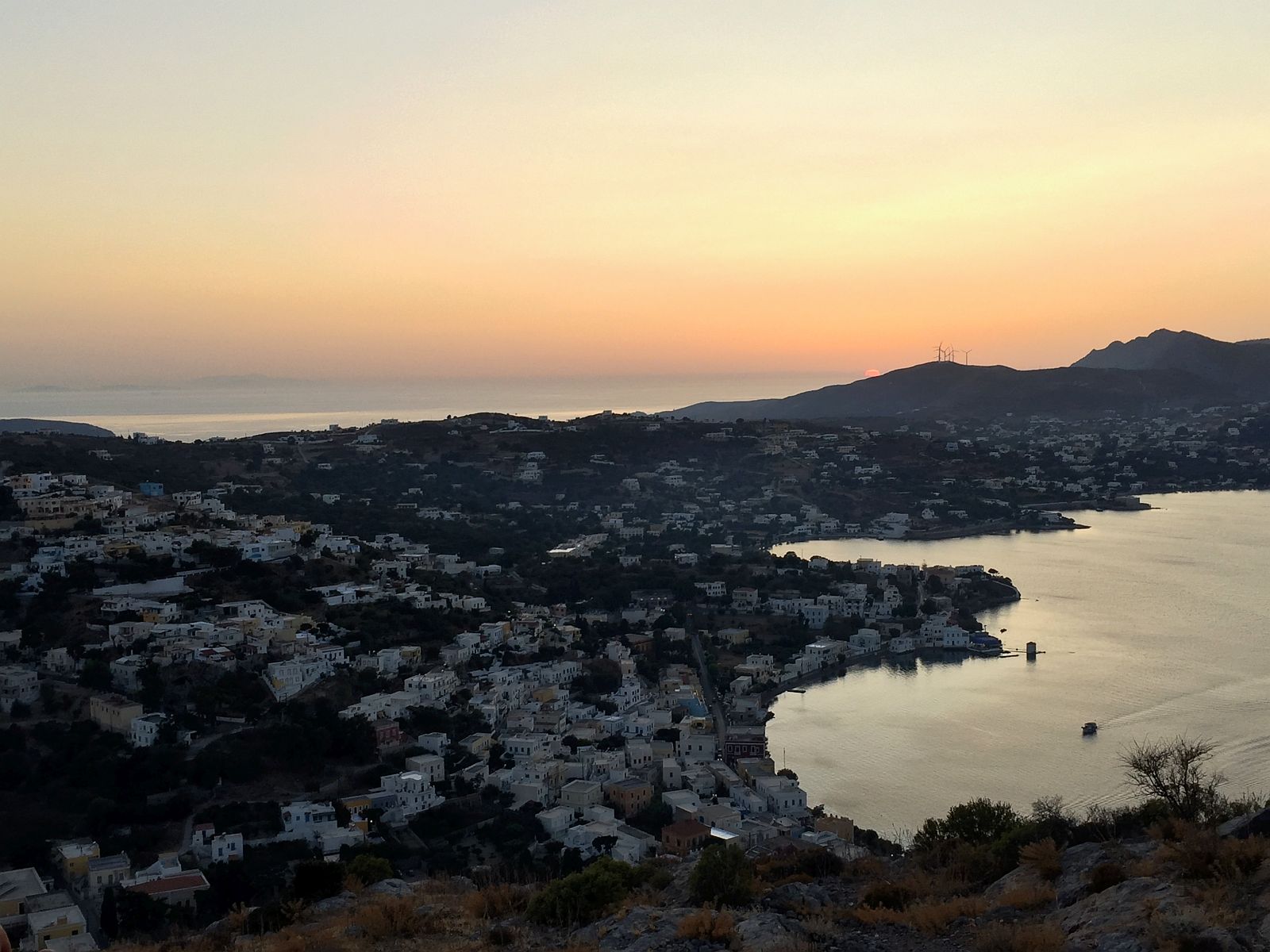
The next day we continued on to the island of Leros where we spent the morning at Aglia Maria Cove swimming, snorkeling along the shallow coastline and enjoying a short break before the sunset hike planned for later in the day. Temperatures for September in this part of Greece hover comfortably around 80 degrees Fahrenheit — a bit warm for sleeping in the cabins, but great for dozing under the stars and swimming. Looking back, I don’t think we saw a single cloud in the sky during the entire week we were there. Clearly, September is an ideal time to visit (we were also told July is a great time to come too; August not so much since it’s the hottest month of the year and uncomfortable during the day for doing much of anything, especially physical activities).
After we finished having fun in the water, we docked in Patneli, an old fishing village home to a small beach and marina, walked along the beach past the coastline cafes and bars, and set out through the windy streets toward the Castle of Pandeli, also known as the Castle of our Lady.
Built in the 10th Century, the castle was donated by the Byzantine Empire to the Monastery of Agios Ioannis Theologos, after which it was taken over by the Knights of Saint John and used to fend off invaders. Today, travelers can visit via an hour-long hike along a switchback road from the town center.
We arrived just in time, and with only minutes to spare before sunset. We quickly rushed around the castle to see the various fortifications that were built over the centuries — obligatory Game of Thrones references were of course made — and then we gathered for our first hilltop sunset in Greece. Known the world over for its sunsets — perhaps most notably for the crowds that gather nightly in Santorini — I can safely report our Leros sunset was just as good, and with the added benefit of having a few thousand fewer people around to share it with. As the sun made its final descent, the small group gathered here on the hilltop began to clap, cheering on the hazy orange and purple light peeking out from the horizon.
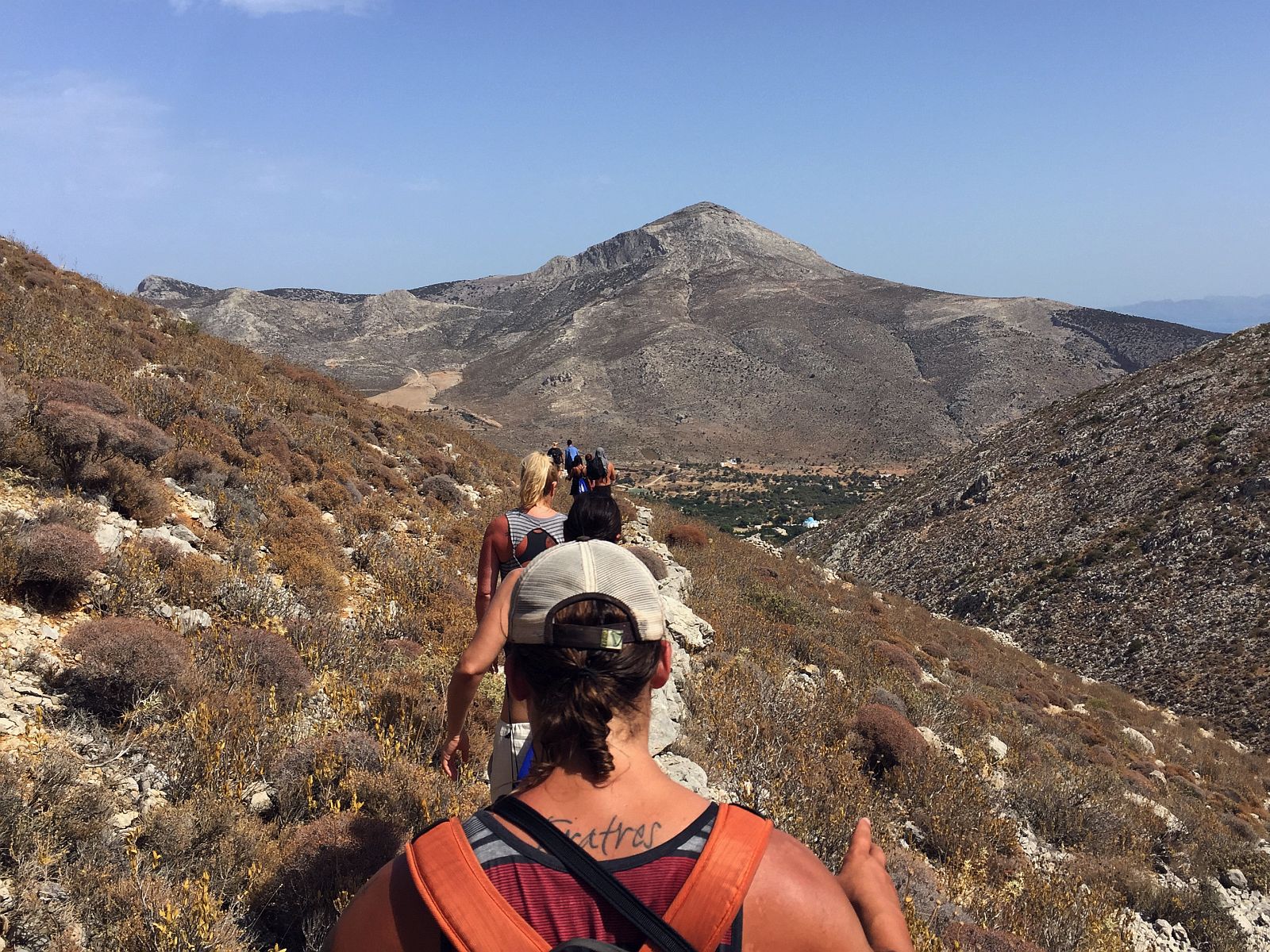
As soon as we pulled into port in Kalymnos, it was clear what the island is known for. All around town were signs heralding the arrival of the Kalymnos Climbing Festival in October, the logo depicting a climber hanging by one hand from the side of a cliff. With its many limestone cliff walls jutting out from the water, and with over 2,500 routes mapped out across the island, Kalymnos is known the world over as one of the best places in the world for sport climbing.
We were not here to climb, but instead to embark on the longest hike of the trip, the Italian Path, a 4-hour trek up and over a large ridge separating the town of Kalimnos from Vathis located on the opposite side of the peninsula. After breakfast, we set out along the marina, making our way past the many small charter boats and wooden crates full of natural sea sponges being peddled by hawkers, a commodity that has been collected and sold here for centuries.
The path’s name comes from the Italians who occupied the island from 1912 up until World War II, and who built the cobbled road to connect the two towns, otherwise inaccessible to each other except by boat. The path winds its way up a narrow hillside, then straightens out and plunges forward until you reach the crest of the ridge, with the southern half of the island splayed out below. With the sun beating down on us and the highest vegetation along the parched path reaching ankle-high, the group settled into a slow crawl forward. For fun (at least for me), I took out my phone and began streaming the theme to Lawrence of Arabia as we marched through the stifling heat.
After reaching the top, the path winds back down into a peaceful valley where olive orchards dot the landscape, then ends abruptly at the end of a long, dusty road. To get to the center of town, you have to continue on for at least another half-hour along a paved street.
Lucky for us, we were able to skip that leg of the hike. Exhausted and tired from our climb, our local guide for the day called a contact of hers, and a few minutes later a flatbed truck with a caged back, presumably for livestock, arrived driven by a large Greek man with a cigarette hanging from his lips. He herded us one-by-one into the back and drove us into town. When we pulled into the main square, the driver opened the back gate and I jumped out, feigning gratitude and kissing the ground, a confusing site for the dozens of tourists eating lunch there.
After our own lunch of grilled squid, a local specialty, we returned back to the boat, changed into our bathing suits, and spent the rest of the afternoon splashing about in the cool, refreshing bay’s water and watching the many climbers scale the cliffs above us, testing their skills in what may be some of the most picturesque climbs in the world.
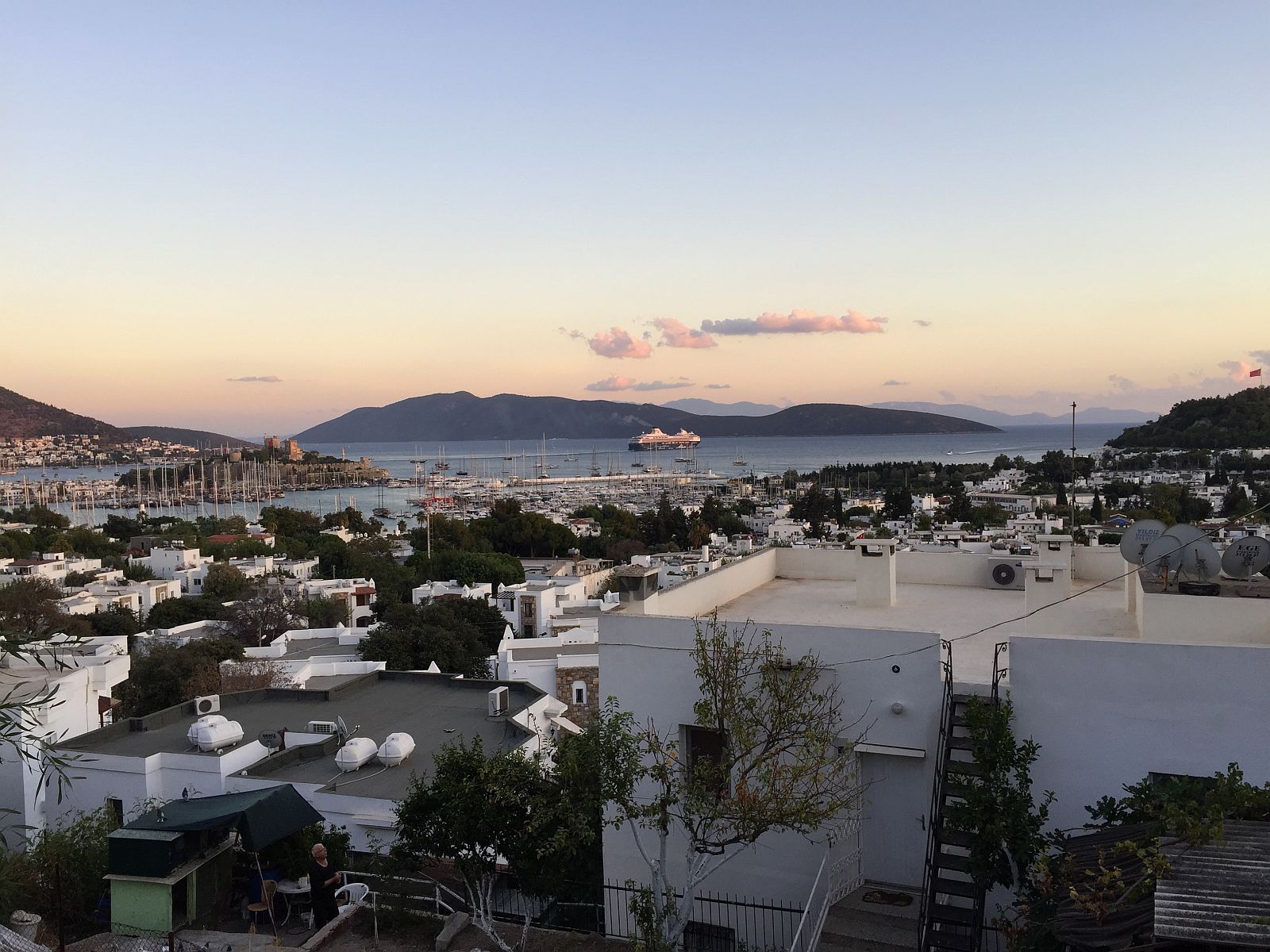
We woke up in the morning to the sound of the boat’s engines firing up. We had spent the muggy night outside on the top deck, falling asleep to the low din of the dockside clubs and to the sight of a night sky impossibly filled with clusters of stars.
Our next-to-last stop before arriving back at Kos was Bodrum, the port city on the Turkish coastline. Located on a peninsula jutting out in the Aegean sea, the town is a well-known vacation hot-spot for both the Turkish and European elite. It was also an Ancient Greek city with a fabled history (it was home to one of the Ancient Wonders of the World, the Mausoleum of Mausolus).
With an afternoon to spare, we decided to visit Bodrum Castle, the city’s most famous attraction. Built in 1402 by the Knights of St John, today the castle is home to the Museum of Underwater Archaeology, a collection of relics that have survived the centuries of invasion, earthquake, fires and human development that has frequented this part of the world since the dawn of civilization. On display in the castle’s many rooms you can find Egyptian jewelry, ancient Greek pottery and assorted coinage all coming from shipwrecks dating back to the 12th Century B.C.
Afterward, we took a stroll through the winding streets of the bazaar in the center of town, then sat at a second-story cafe, sipping apple tea while watching the many visitors in town walking through the marina.
In time for dinner, we met the group back on the boat for one of our last meals on deck. We had plans that evening to head out with everyone for hooka and to check out the many beachside bars. Sitting down around our wood table, Cynthia, the owner of Sun Fun You who had recently joined up with us, told stories with the boat’s crew as we drained the remaining bottle of wine on board.
She talked of the boat’s short history: how proposals had been made, babies conceived, and lifelong friendships created all in the short amount of time the boat had been plying these same waters where others have been voyaging for thousands of year. We lifted our glasses for a final group cheers, one last celebration here on our home away from home, out on the Mediterranean.

/
 Matt Stabile is based in New York City, and is the founder and Editor-in-Chief of The Expeditioner which was founded in 2008. You can read his writings, watch his travel videos or contact him via email at any time at TheExpeditioner.com.
Matt Stabile is based in New York City, and is the founder and Editor-in-Chief of The Expeditioner which was founded in 2008. You can read his writings, watch his travel videos or contact him via email at any time at TheExpeditioner.com.
The post Sailing the Greek Islands (Yoga, Hiking and Wine Included) appeared first on The Expeditioner Travel Site.
]]>The post Naked On The Loveliest Beach In The World appeared first on The Expeditioner Travel Site.
]]>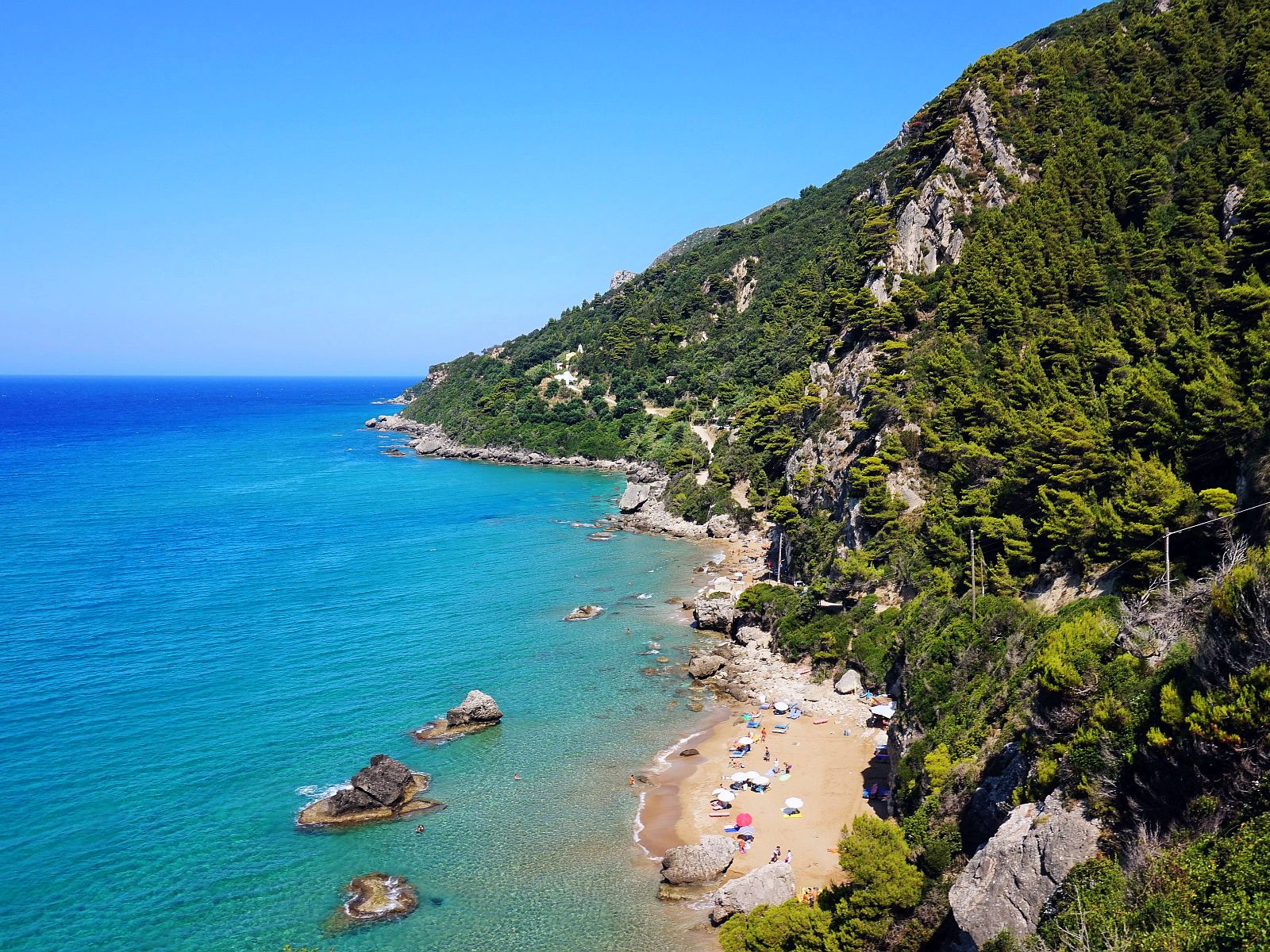
Steep, narrow and lacking guardrails, the crumbling cement road to Myrtiotissa Beach, Greece, appears to be headed over a cliff, and my husband, two young daughters and I along with it. Leaving the car parked slantwise along the shoulder, we continue on foot, the trill of cicadas rising and falling in the dusty summer heat. Around the bend in a hairpin turn, our destination bursts into view and we stop to take pictures.
A secluded crescent of golden sand, the beach nestles beneath the limestone cliffs on this otherwise rocky stretch of Corfu’s west coast. The Ionian Sea shimmers into the horizon in deepening shades of turquoise, umbrellas sprout from the sand, and we can just make out the tiny figures of people lounging in the sun and bobbing in the waves. From this distance, however, we cannot yet see what is missing: bathing suits.
Named after a small 14th-century monastery — Our Lady of the Myrtles, which is perched above it in the forested hills to the north — Myrtiotissa is the only officially tolerated nude beach on the island of Corfu. But we are not nudists, and we have come for the famed beauty of this place rather than a full-body tan. Writer Lawrence Durrell declared Myrtiotissa “perhaps the loveliest beach in the world” in Prospero’s Cell, a memoir of his life in Corfu as an expat during the late 1930’s. More recent travel guides contain similarly glowing reviews, one calling Myrtiotissa Europe’s “most stunning beach.”
With these superlatives in mind, and not a second thought about the dress-code, we set off from our hotel in Corfu Town this morning, rental car loaded with all manner of beach paraphernalia, bathing suits included. Yet now that we are here, I begin to doubt whether this was such a good idea, hesitating for a moment before leading my family through the towels and lounge chairs where mostly middle-aged tourists sprawl naked and sun-burned. Others drift about knee-deep in the clear, shallow water, their private parts on full display.
“Should I smile and nod hello or avoid eye contact?” I wonder, suddenly realizing that I know nothing about the rules and etiquette of nudism, or naturism, as the practice is also euphemistically called.

There is no turning back now, so I opt for the safer, less conspicuous approach and make a break for an unoccupied shaded area at the base of the cliffs. My husband settles in against the rocks with a sigh of relief while the girls bound off into the sea. I soon scamper after them with my camera — as I am wont to do — and begin snapping pictures while they frolic in the crystalline water.
“No photos,” says a bronzed brunette who seems to have sprung like Aphrodite from the sea foam and into my personal space just as I’m getting started.
She gestures toward a ramshackle drink stand in a far corner of the beach. There, scrawled across a scrap of wood in faded paint are the words: “no Foto.” Several onlookers frown and shake their heads and it dawns on me that I have just broken one of the cardinal rules of nudism only minutes after arriving here. I want to explain that I was merely taking photos of my own children, but instead mumble an apology and retreat to our encampment, camera between my legs.
Once my embarrassment subsides, I decide to go for a swim. A corpulent 60-something wearing nothing but sunglasses and a visor looks up from her magazine and scowls as I make my way across the hot sand. While bathing suits don’t seem to be expressly prohibited, I’m sensing that to wear one is a major faux pas. For the first time in my life I’m self-conscious about showing too little skin in my string bikini.
“So why not give it a try?” asks a quiet but persuasive voice inside my head, and then I’m untying my bathing suit and tossing it onto the ground in an uncharacteristic fit of impulsivity.
The girls giggle and splash as I plunge into the water and my husband, still hiding in the shade, looks on with amused interest.
“You are the mommy mermaid!” my daughters announce with glee, piling onto my back in a flurry of elbows, knees and slippery skin.
As I enter their imaginary salt-sprayed world, all my preoccupations, as well as the strangeness of being naked in public, quickly fade away. Time stands still as we play together, diving like dolphins and eating sand cakes at underwater tea parties. There are none of the everyday distractions that so often keep me from being present: no piles of laundry to fold, no emails to answer or appointments to keep. And here at Myrtiotissa, even the compulsion to point and shoot, yet another diversion from truly living in the moment, has been eliminated. As the sign says, “no Foto.”
Later, I wade further out from shore where three massive rocks stand sentry in the deepening water, craggy and gnarled like petrified sea monsters. Beyond, a few ambitious swimmers set a course due west toward Calabria, their shining bottoms rolling from side to side in the gentle waves.
I, however, am content to laze here by the rocks and admire the mountains that rise up over the beach, lush and green from winter rains. Sandwiched between their sheer cliffs and the vast, blue sea, the beach looks small and vulnerable. Myrtiotissa is, in fact, slowly shrinking as each year the Ionian washes more of it away, a reminder that nothing in life is permanent. Beaches erode and children grow, so we must treasure their beauty while we can.
Closing my eyes, I lay back to float beneath a cloudless, azure sky and melt into the sea. The water is soft and cool, swirling around me like liquid silk. Myrtiotissa, as Durrell observed, is exceptionally lovely. And perhaps, I have come to learn, even lovelier in the nude.

 A former environmental attorney, aspiring freelance writer, frequent traveler and mother of two daughters, Inger has written for Travelers’ Tales online publication, Tales to Go and The Expeditioner.
A former environmental attorney, aspiring freelance writer, frequent traveler and mother of two daughters, Inger has written for Travelers’ Tales online publication, Tales to Go and The Expeditioner.
The post Naked On The Loveliest Beach In The World appeared first on The Expeditioner Travel Site.
]]>The post Zanzibar On The Mind appeared first on The Expeditioner Travel Site.
]]>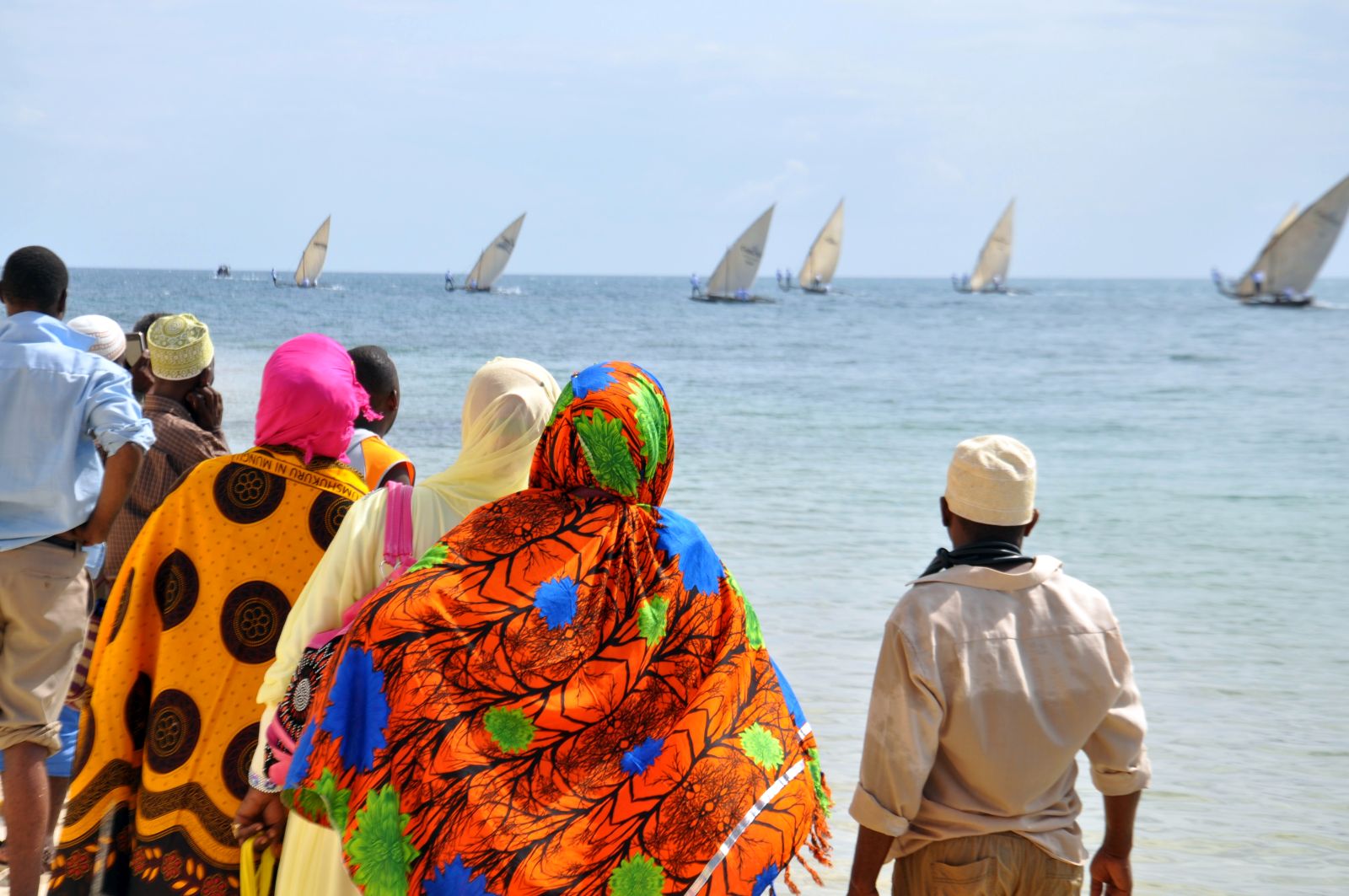
The men sit and they wait, casually oblivious to my watchful gaze. I am standing on a small stretch of beach that straddles Zanzibar’s main Town, Stone Town, and the narrow ribbon of Indian Ocean, which separates the island from the African mainland. Fifteen traditional dhow boats wait expectantly at the water’s edge, tiny waves gently caressing their simple wooden hulls. A basic set of wooden poles and weather-beaten ropes lead to two stabilizers on either side, a thicker lone pole acts as the mast, softly swaying to the rhythm of the sea. The ancestors of these crude, yet exquisitely crafted boats have plied the waters around Zanzibar for thousands of years.
Modern hulking hotels with little to no aesthetic thought loom over the beach, gazing down oppressively on the small crafts. The fiery African sun has begun its downward path but still eats into you mercilessly. Tiny rivers of sweat explore my body as I watch the crews tighten ropes, check, then re-check knots. Their toes gently break the calm, warm waters of the Indian Ocean as arms casually hang across the simple set of ropes that lead from the the edge of the small boats to the top of the mast. Some stretch their legs one last time in the shallow transparent tide, but most simply sit and wait.
Ramadan had broken days before and the island was in the thralls of its annual four-day Eid celebration. Islamic beliefs fuse effortlessly with the intense colors of Africa — modesty is still preserved, but it is done so with a vivid, vibrant pallet of color. The often dour colors reserved for Muslim women in the Middle East are replaced by an intense kaleidoscopic rainbow that swirls nightly through the smoky market stalls in the Forodhani Gardens. Families move fluidly around tables groaning under great towers of lobster, crab and fish. The occasional lamp casts warm flickers across the tables and the faces peering closer for inspection.
Race time is approaching. The beach hums with excitement as women and children surge down the sand. Small groups gather with the children playing excitedly among the adults, the youngest of which hold tightly to their mothers or older siblings, while peering shyly around them.
The boat closest to the town begins to hoist its mainsail, ropes tighten and the white cloth strains into the wind. A wave flows rhythmically down the beach as each boat in turn sweeps its sail skyward. The competitors ready themselves.
A countdown begins somewhere in the crowd. In unison the younger crew members heave their boats off the sand and into the shallows. Each boat wobbles as it gains buoyancy followed by a jolt as their sails arch into the wind, tugging the tiny vessels out to sea. Those in the water scramble aboard and fling themselves into position.
One hapless boat begins turning awkwardly in the wrong direction. The crowed roars encouragement but to no avail — the stricken boat starts to drift sadly back to shore. A group of young boys hurl themselves into the water and begin dragging it out to sea. The beach dwellers bellow their approval: the little boat has been saved.
It joins the back of the line that is now racing parallel with the shore. Spectators young and old scamper along the beach front whooping and cheering. At the headland they gather and watch intently as the dhow boats speed out to open water. Slipping further and further from the shore, their outlines slowly become simple black dots on the horizon. The battle is now almost out of sight.
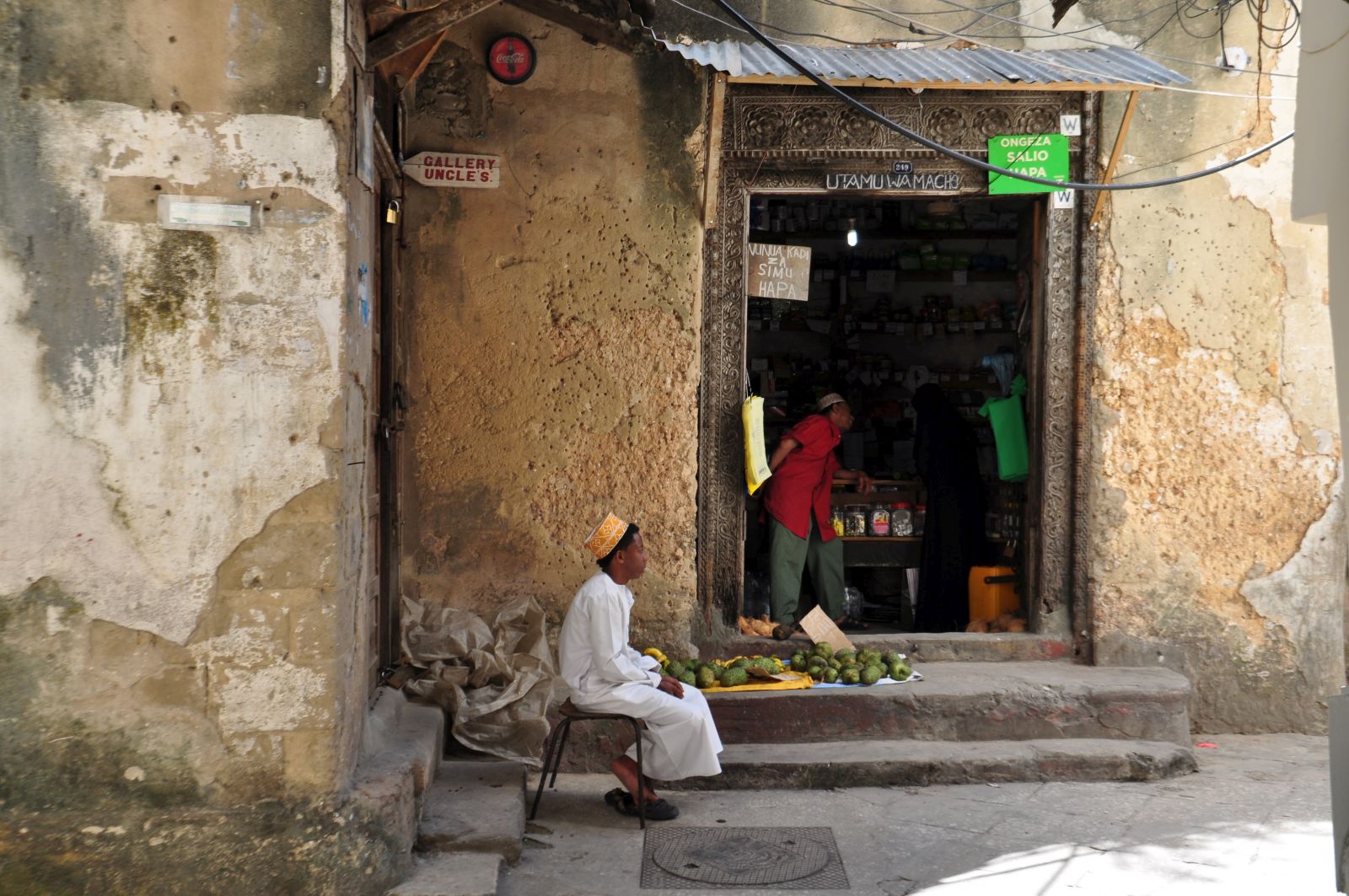
If the ocean is the life of Zanzibar, its history lies in the twisting, cavernous alleyways of Stone Town. The intricate set of paths between the market and the seafront lead both everywhere and nowhere, a perfect area to become happily and understandingly lost in. The varied and tumultuous past of this small African island lives and breathes in the chipped paint and battered facades of many of the building — a story of grandeur, past riches and of faded glory. Ancient, beautifully carved doors keep their mysteries well hidden while others are flung open as souvenir shops to line the more popular routes.
Zanzibar’s history is colorful but checkered. Passed from empire to empire over time, its importance has always been unique. Portugal, Oman and finally Britain squeezed what they could from Zanzibar until Tanzania finally declared independence in 1964. The island played an integral role in the spice trade and vast wealths were built on Zanzibar where Stone Town still showcases the crumbling relics. The towering, wonderfully named House of Wonder echoes of an architectural past that has been sadly lost. The bold, splendidly large building complete with a dominating clock tower houses a small museum, which in truth is far less exciting than the actual building itself.
Yet Zanzibar is perhaps equally known for its important part in the dark stain of slavery. Its infamous role as the largest slave market in Eastern Africa meant that at its peak an estimated 50,000 slaves passed through the island each year until slavery was outlawed in 1873.
The old slave house, with its cramped, sweltering rooms that once housed hundreds of slaves as they awaited their sale, is a painful reminder of the horrors that heavily contributed to Zanzibar’s fortune. Outside the sun shines brightly on a set of sculptured figures standing in a nearby pit. Heavy iron shackles hang from their necks and a look of mournful acceptance captured on their faces. Directly behind it lies the island’s largest Christian church. The congregation seated outside sing a painful, yet uplifting hymn in Swahili. It seems entirely appropriate for the setting.
A short distance away, the Darajani market is a wonderfully vivacious reminder of where you are. Thick streams of people move like lava in every direction, in and around market stalls selling everything from fruit to shampoo, from telephones to chickens. Sellers slouch in the afternoon sun, their goods spread widely over simple plastic sheets. Intense negotiations take place over both the price and the quality of what’s on offer. Motorbikes grunt impatiently while attempting to inch through the mob before finally breaking away and roaring on. In the darkened corners of the covered meat market mangled, unidentifiable animal carcasses hang from jagged hooks, blood congealing on the floor.
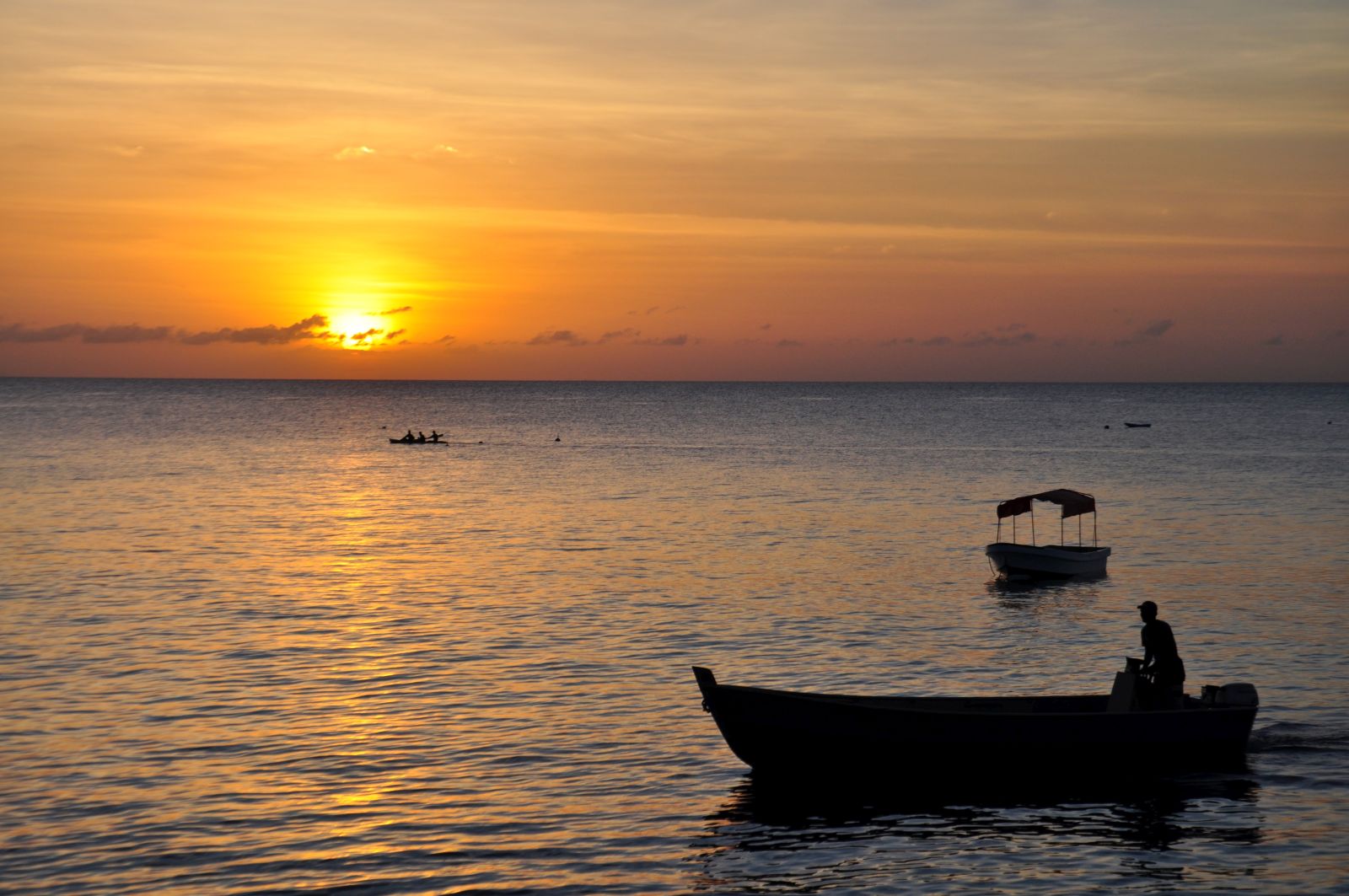
Two hours later the boats begin to return. The fleet that had all began as one are now spread out over a wide distance. The two leaders cling desperately to one another as they once again run parallel with the shoreline. It is almost too much for the crowed. Difficult to distinguish who was supporting who, the noise simply grows and grows into a great orchestral boom.
One boat begins to slip clear. As it nears the finishing line some of its crew throw themselves overboard, hauling the boat through the water and onto the sand. The air is split by the roar that greets them as the crew fall to their knees in exhaustion.
The triumphant boat is dragged onto the sand and the crew take in the adulation of the jubilant crowd that quickly surrounds them. Tired handshakes and hugs are distributed as the weary victors are escorted from the sand to what I can only hope is a night of joyous merriment.
The boat race has been won.
As the rambling excitement moves away and the noise begins to calm, I am left on my own on this small beach on this tiny African island. I try to retrace memories to a time when I didn’t truly understand what Zanzibar really was, but I struggle — the connection is no longer there.
I turn and walk along the beach towards a bar named Livingstone’s which I have become keenly acquainted with. Located in the building of the old British consulate, with its lofty ceiling and wonderfully old-fashioned central bar, it’s the kind of establishment that feels like it hasn’t changed in hundreds of years.
As I sit on a creaky wooden stool cooling myself with an ice-cold beer, I imagine myself as an African explorer from the previous century, taking time out from my latest daring adventure down the Zambezi river. My eyes settle on old map of Africa that hangs on the wall and the mind begins to drift dreamily towards unexplored corners of the continent.

 Olivier Guiberteau is a freelance travel writer and photographer (and English teacher) who lives in Northern Italy, on the shores of Lake Garda.
Olivier Guiberteau is a freelance travel writer and photographer (and English teacher) who lives in Northern Italy, on the shores of Lake Garda.
The post Zanzibar On The Mind appeared first on The Expeditioner Travel Site.
]]>The post Learning To Lime In Anguilla appeared first on The Expeditioner Travel Site.
]]>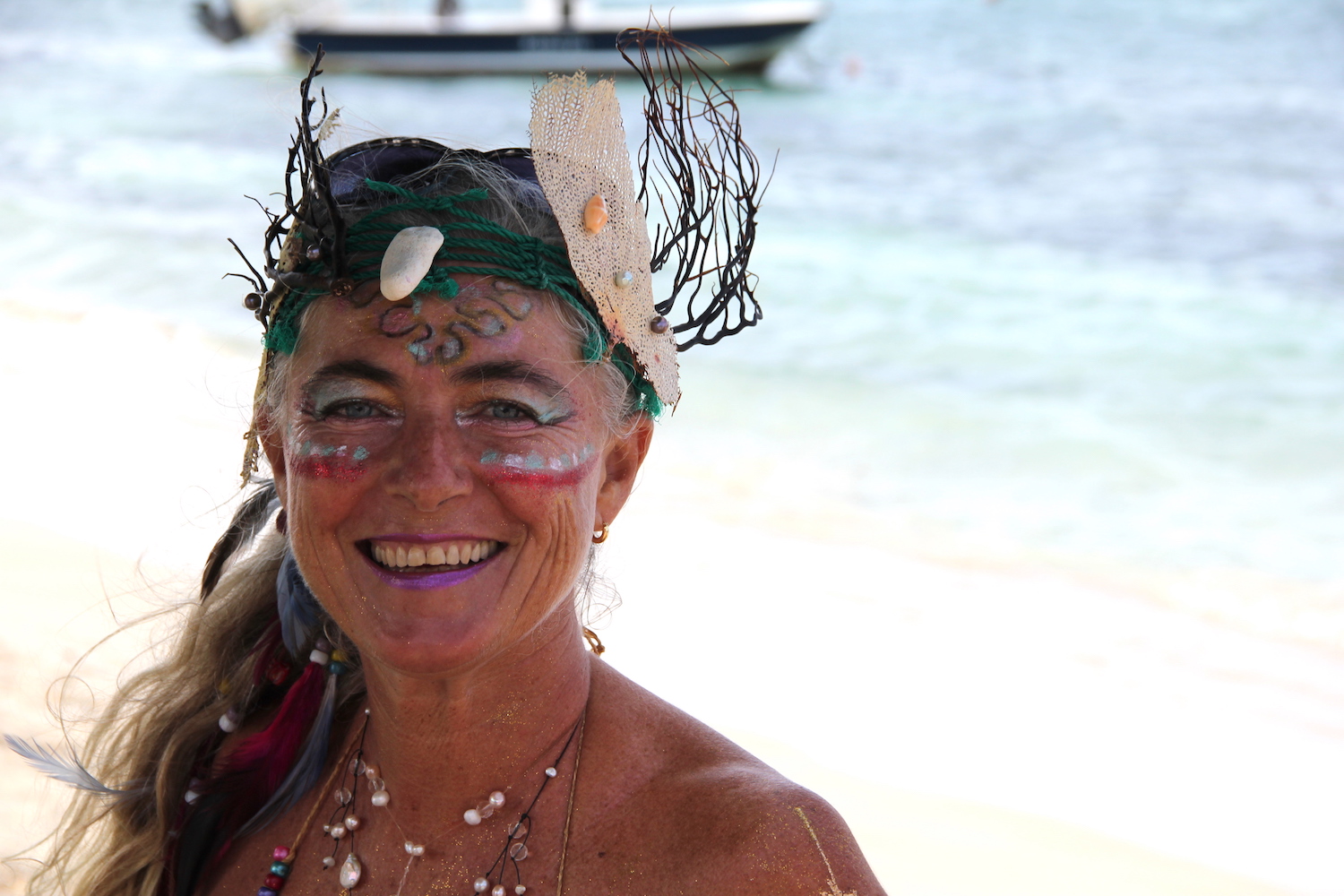
Of the few stores situated on Anguilla, I saw two that were named “Limin’,” and they were wildly different. One was a boutique that sold high-end, brightly covered beach apparel and jewelry. The other was a large, run-down grocery store that sold the likes of Spam, sweetened bread rolls and coconuts.
It took me longer than I care to admit to sound it out — “limin’” I thought, pronouncing it aloud with a short “i” like I was saying “Tim.”
“No, liiiimin’,” corrects my cab driver and native Anguillian, Lowell, while maneuvering his van along one of the few thin streets in the country. “You know. Call up your buddy, ask what they’re up to. They’ll say, ‘Nothing, just limin’.'”
Limin’ means hanging out. Chilling on a porch. Shooting the shit with friends. While the term is used throughout the Caribbean, on a recent visit to this tiny, 16-mile-long island located off the coast of St. Maarten, I realized that “limin’” is an ideal way to describe Anguilla.
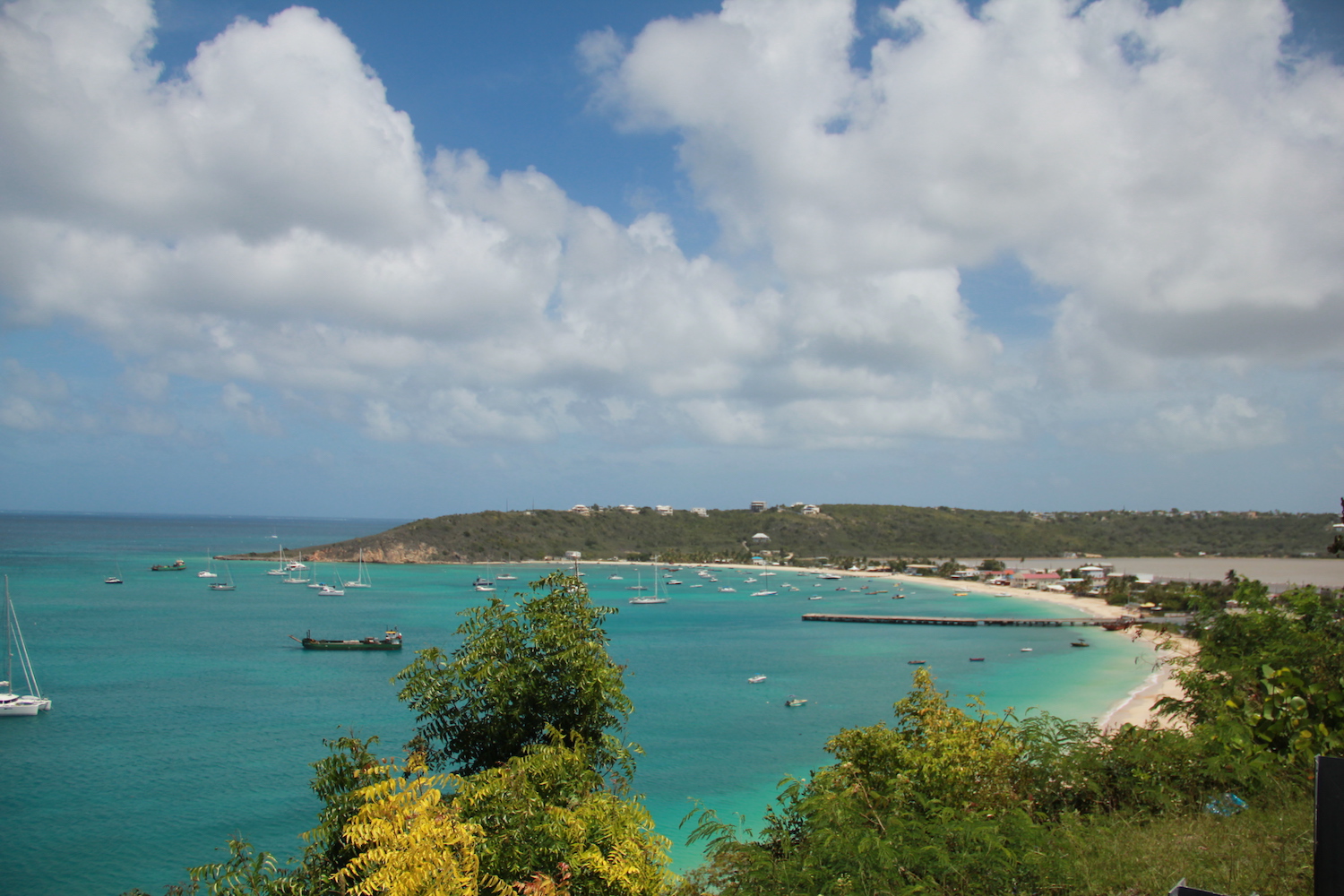
“Here we sell a whole lot of nothing,” says Lowell, as we drive past scraggly overgrown yards that contain goats tied up on pegs, rusting cars and the occasional, brilliant bougainvillea vine.
He’s kind of right. While other islands in the Caribbean would have been packed with tourists over spring break, Anguilla seemed empty. Beaches were void of crowds and chatter. Nobody tried to sell me anything — not even a wooden trinket carved into a turtle or marijuana joints the size of cigars, like the onslaught of vendors I have endured on other islands that cater to the cruise crowd while “limin’” at the beach.
While you can definitely sprawl, cocktail-in-hand, on white sand for days, there is an unexpected energy to Anguilla that makes it a uniquely interesting place to visit. There’s a wildness to this island that complements rather than contradicts its cerulean seas, five-star hotels and fancy restaurants.
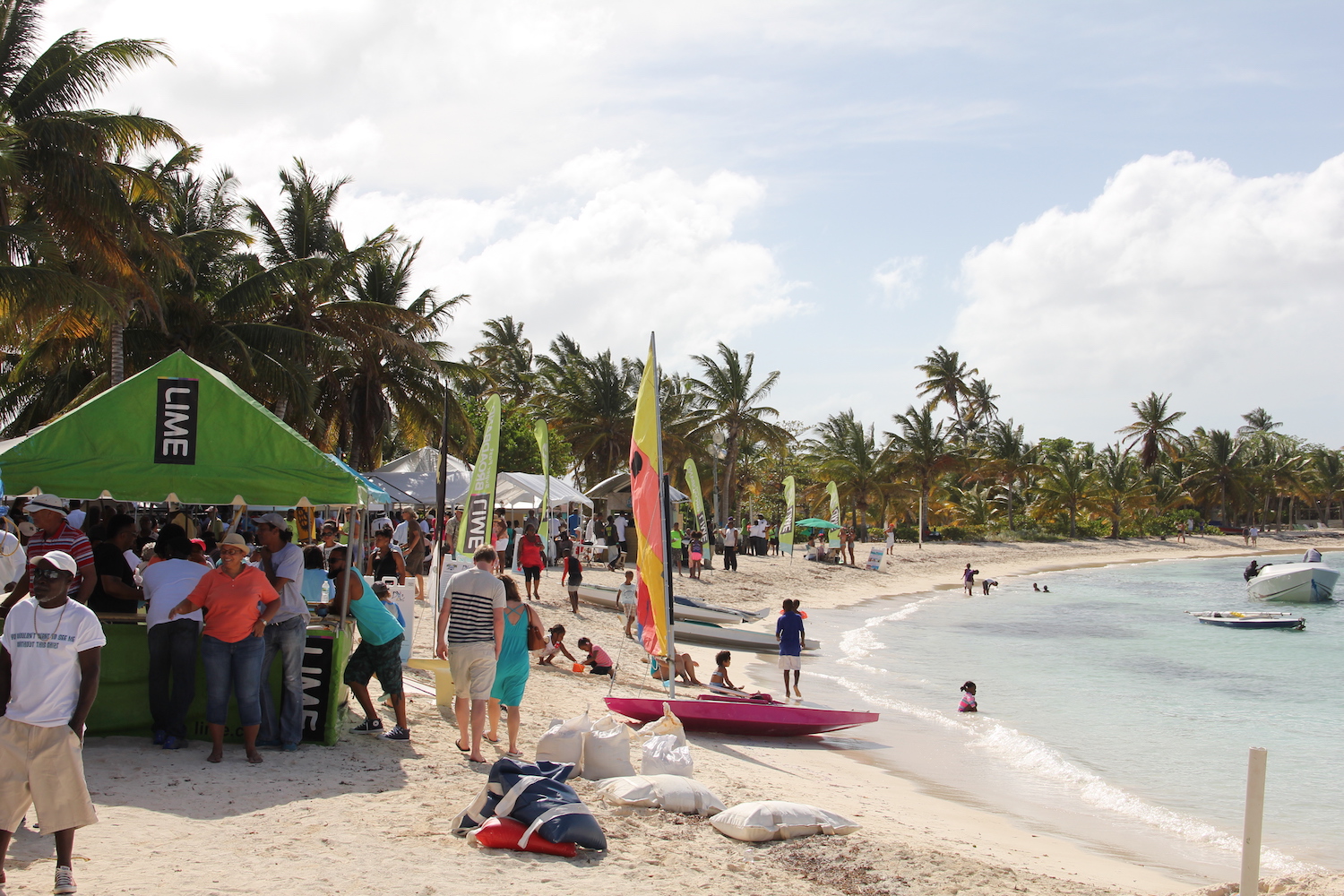
For example, time your trip right and you’ll experience Festival del Mar, a bustling seafood festival that takes place over Easter weekend. With over 15 vendors, this small but growing gathering of locals and tourists alike jives with folks noshing on fragrant seafood soup, johnny cakes (fried dough accouterments about the size and shape of small bagels) and some of the largest spiny grilled lobsters you’ve ever seen — brushed with spiced butter and plated with lemon halves.
Nobody serving rum punch, the island’s beverage of choice, seemed to know what it was actually made with. Maybe some sort of fruit juice? I never found out, something that would have bothered me in my food-conscious home city of Boulder. But, hey, I’m limin’ man. Sure, I’ll have a rum punch, pineapple from concentrate, be damned.
This is what Anguilla does to you. It prompts you to release. Just be. I whole-heartedly adopted this attitude.

One afternoon, my group and I aimed to have lunch at Scilly Cay, a miniscule island — we’re talking a shack and a couple palm trees, here — located within sight of Festival del Mar. To get there, guidebooks say to walk down to the end of the dock and wave your arms in the air “like an idiot” (that’s literally in the guidebook) in the general direction of the island. We did as told. Eventually, a small blue-and-white motorboat roared up and locals and tourists crowded in. At Scilly Cay, we ordered grilled chicken, more lobster, more snapper, pasta salad, garlic bread and yes, more rum punch.
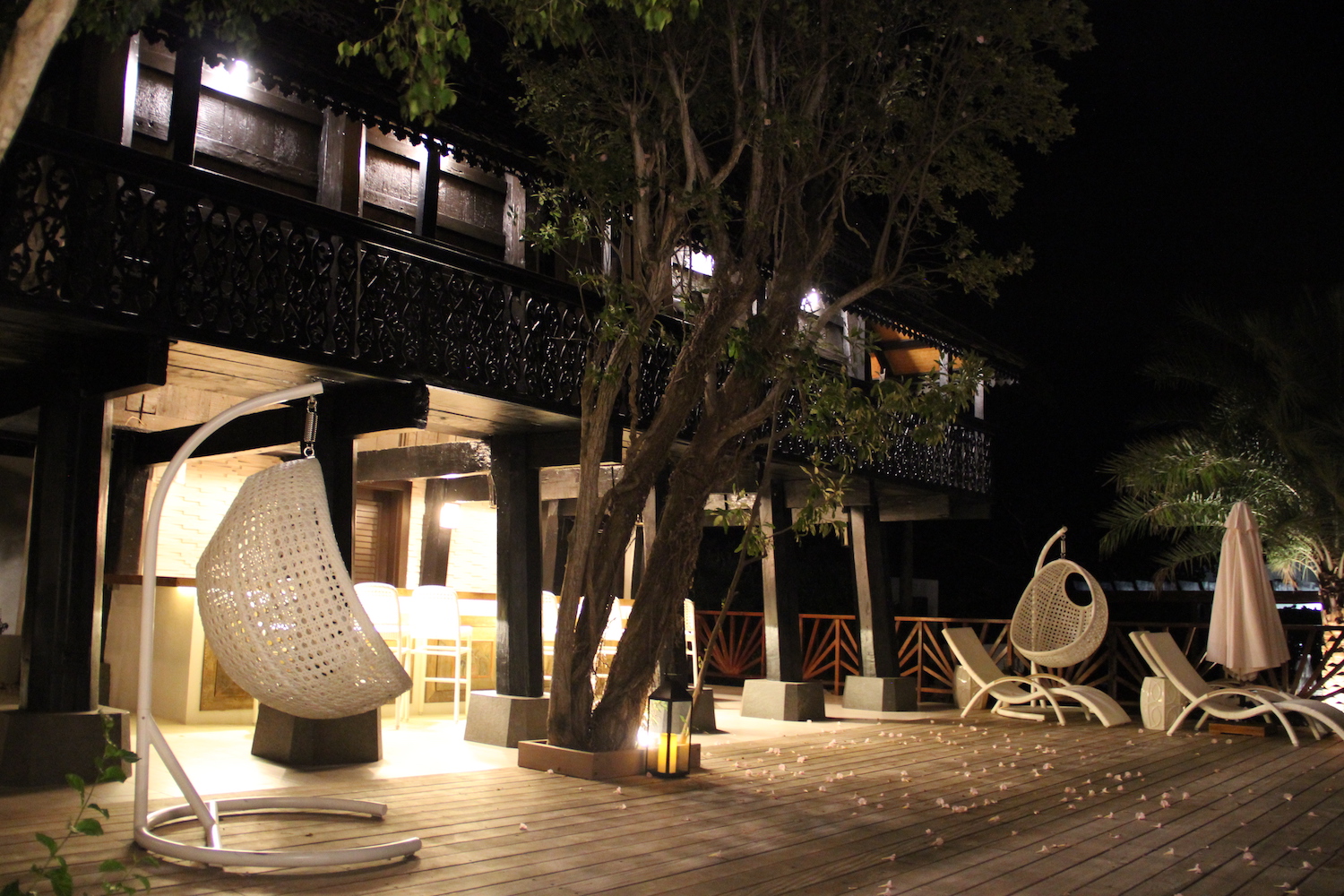
There are fancier ways to “lime” while in Anguilla, too.
I spent the duration of my stay at the Sheriva Villa Accommodations, a collection of luxury houses that featured up to eight bedrooms each. When checking in, I found that my room is not a bedroom but a suite, complete with a king bed that overlooks the ocean, a kitchenette, a Jacuzzi tub and a shower that had several spouts (umm, even one that’s derriere high — what’s that all about?). In the morning, I practiced yoga on both (yes, there were two) private balconies.
If you really want to splurge, stay at the newly built Zemi Beach House, a gorgeous resort with 63 rooms and one of the most impressive open-air spas I’ve ever seen. Have lunch or dinner at Zemi’s 20 Knots restaurant, which dishes out freshly caught seafood served in a style I’ll describe as “sophisticated casual.” Think yellowfin tuna ceviche served with potato salad, and grilled corn mixed with feta and fresh herbs. The restaurant overlooks the award-winning Shoal Bay East, a beach praised by top travel magazines for its powdered-sugar sand, diminutive waves and textbook turquoise water. It’s impressive, to say the least.
Fancy accommodations and delicious meals are great, but most Caribbean islands have beautiful beaches and hotels and good food.
Anguilla is different because it makes space. The country gives you time to think.
It motivates you to sit at dusk and notice how you can see increasingly more stars at every passing moment. It gives you time to stand for an hour, as I did one day, looking at the ocean crash upon jagged rocks and unpack thoughts usually masked by work or errands or relationships. In Anguilla, I dove into the chasms of my own mind and thought about the person I wanted to be, not the person I’ve been told I should be.
Don’t visit Anguilla if you want to hike or run or mountain bike or rock climb. And don’t visit this island to read, either. Put down the book. Turn off your cell phone.
Instead, go down to the shore and stare into the brilliant blue-green sea. You’ll find your answers there.

Stay
If traveling in a group . . .
Sheriva Villa Accomodations
Villasatsheriva.com
If you’re a foodie fanatic . . .
CuisineArt Gold Resort & Spa
Cuisinartresort.com
If you’re looking for some serious R&R . . .
Zemi Beach House Resort & Spa
Zemibeach.com
Eat
For masterfully prepared Japanese food…
Toyko Bay
Cuisinartresort.com/Tokyo-Bay
For upscale fare with a beach-chic vibe…
Blanchards Restaurant
Blanchardsrestaurant.com
For authentic Anguillian brunch…
Tasty’s Restaurant
Tastysrestaurant.com
For French-Thai-Japanese fusion with a mind-blowing view…
Hibernia Restaurant & Art Gallery
Hiberniarestaurant.com

About the Author
/
 Jenna Blumenfeld is a Boulder, Colorado-based writer and editor with a knack for creative and captivating storytelling. A deadline-driven wordsmith, she mostly covers food, travel, and outdoor sports. When not writing, Jenna can be found skiing, rock climbing or road cycling. Check out her work at JennaBlumenfeld.com.
Jenna Blumenfeld is a Boulder, Colorado-based writer and editor with a knack for creative and captivating storytelling. A deadline-driven wordsmith, she mostly covers food, travel, and outdoor sports. When not writing, Jenna can be found skiing, rock climbing or road cycling. Check out her work at JennaBlumenfeld.com.
The post Learning To Lime In Anguilla appeared first on The Expeditioner Travel Site.
]]>The post Wild Kauai: Surfing With A Hawaiian Legend appeared first on The Expeditioner Travel Site.
]]>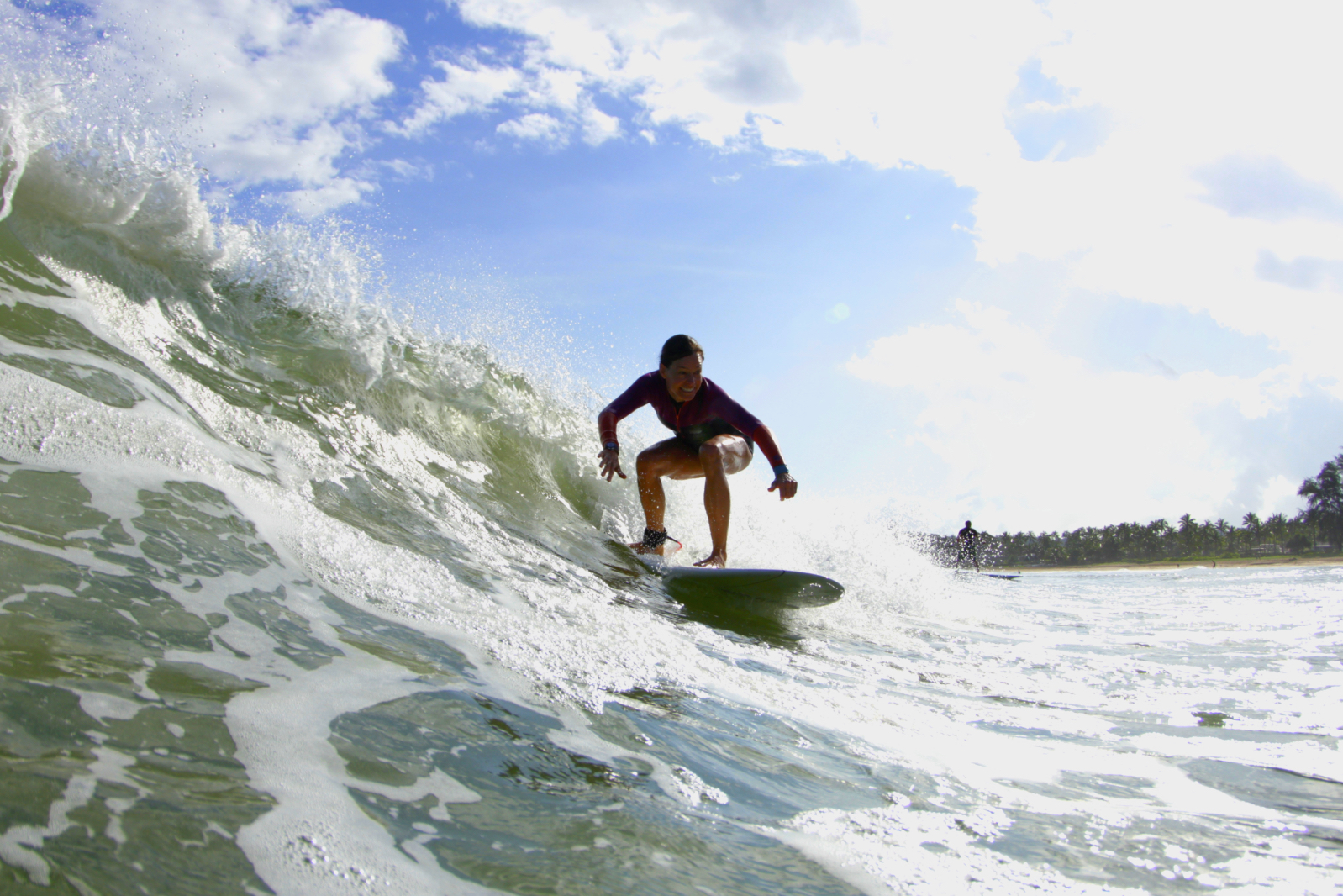
I looked through the sliding glass doors of our beachside rental, past the palm trees and rain-soaked grass, and out to the water. The early light showed Hanalei Bay to be a windswept jumble with not one surfer out on dawn patrol.
At 6:30 a.m. my friend Sarah bounded in. “The guys just texted. Kilauea gas station at 7:15,” she said. I hoped conditions would be better over there.
I was halfway through an eight-day stay in Kauai with three girlfriends, enjoying curling, consistent waves every day. Despite the aching arms typical of other surf trips, that April visit was proving to be more than a wave-catching vacation. I was riding swells with Hawaiians who embodied not just the local surf scene, but the untamed spirit of Kauai itself.
Titus Kinimaka pioneered big wave surfing and has ridden some of the biggest rollers ever seen. With his flowing hair and intense black eyes, Titus looks like the man of the sea that he is, with an instinct for the ocean. Titus always had a plan to find the best waves, and the rest of his crew — Titus’s nephew Kaimi Kaneholani, fellow big wave surfer Clay Wolcott, and Kauai-born photographer Ry Cowan — never questioned it.
Titus commands respect all over the Hawaiian Islands. With Titus in our midst, we were able to surf at Anahola, a surf spot on a long, undeveloped beach accessed through “The Rez,” the homestead set aside for native Hawaiians, where non-locals are unwelcome. Although Titus’s presence meant I could paddle out unperturbed, I still had to cede most waves to the experts there.
While the Anahola day had been sun-drenched and hot, this morning started out gray and wet. I roused my friend Suzie and San Francisco neighbor Caitlin while Sarah started a pot of coffee. We pulled on bikinis and board shorts, gulped down our muddy caffeine and climbed into the dowdy beige minivan I’d rented to hold our many surfboards. I drove us eastward on Highway 56, away from the popular bohemian town of Hanalei on Kauai’s northern coast and to the tiny village of Kilaueu in the northeast.
The drive was just 10 miles, but it was well past 7:30 a.m. when we reached Titus and Kaimi seated in Titus’s weathered white pick-up truck. They looked like they’d been waiting hours. After a lifetime of wave riding, Titus still rises at 4:00 a.m., too excited about getting into the water to sleep any longer. Before daybreak he meditates and completes hundreds of push-ups and sit-ups, staying mentally and physically tough enough to tow into and ride 100-foot waves whenever he can find them.
We followed Titus’s pick-up down a winding, slippery road to a clearing above Rock Quarry Beach where Clay and Ry awaited, sheltered from the wet weather in their own pick-ups. I sensed their exasperated amusement at our lateness. The beach was a deep, wooded cove, protected from the gale that was blowing out the surf elsewhere on the north coast. With the board under my arms, I felt the mud squish between my toes as I picked my way through the needled ironwood pines towards the beach.
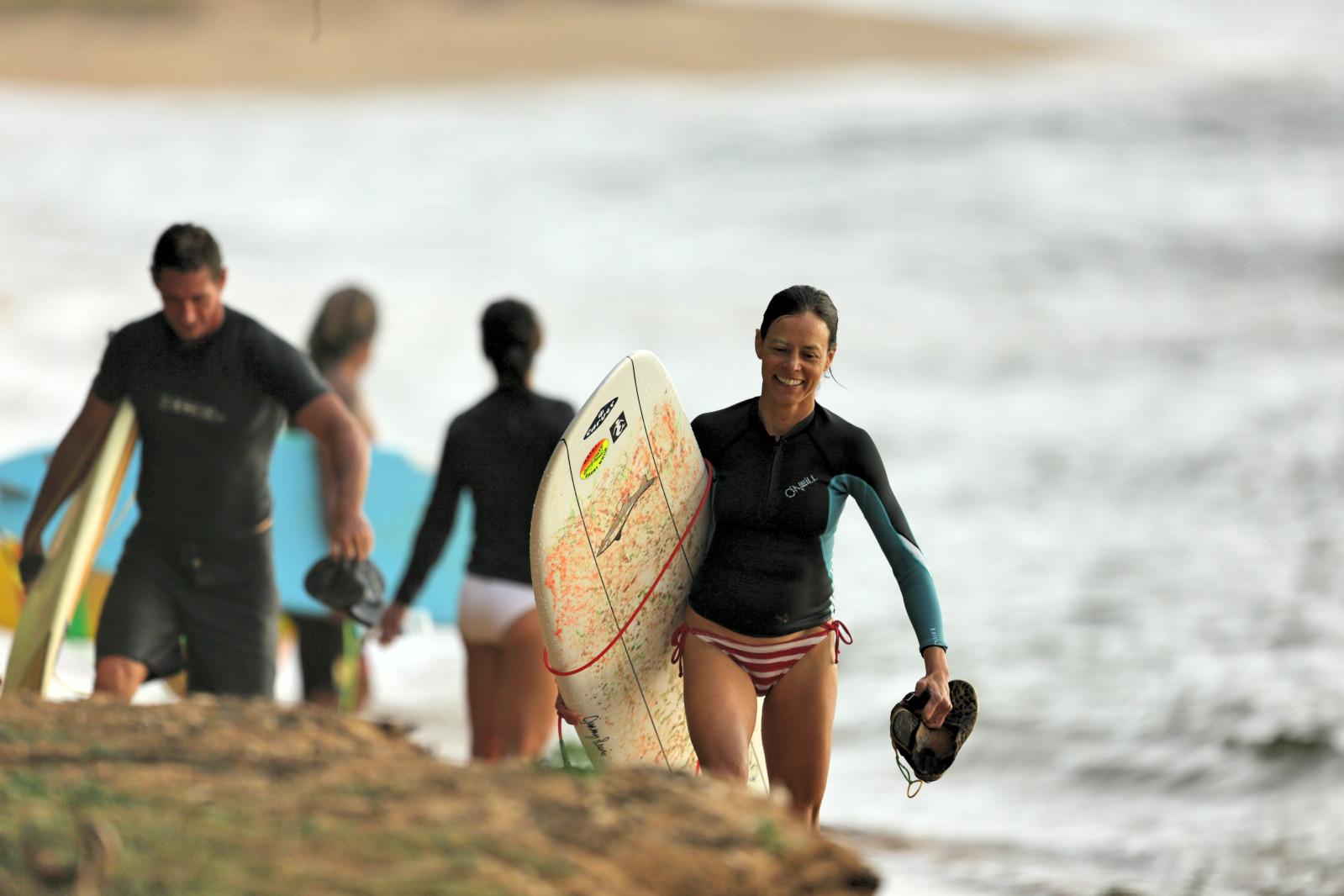
I paddled ahead of everyone out towards a speedy breaker that fell out from under me. As I was trying to master this tricky wave, the drizzle became a downpour, pock-marking the water with increasing ferocity until the water dimples merged into a whole. The ocean became an undulating inky mass that mesmerized me. When at last I looked up, I saw that my friends were back on land, driven shoreward by the grim conditions. We’d missed the early morning window to surf here. Kaimi was on his board nearby; the guys never left us alone in sketchy swells.
Reluctantly, I followed Kaimi back to shore. There, Titus announced we would travel to the west side. From where we’d started that would be over 70 miles, three-quarters of the way around Kauai. If the island were a clock face, it would be like driving from high noon to 9 o’clock. The final quarter of coastline, from 9 to midnight, has no roads at all; it’s dedicated instead to wilderness reserves and the otherworldly Na Pali cliffs that have featured in many films, most recently Jurassic World.
We headed next to Titus’s home in the Anahola homestead to pare down to just one surfboard-laden pick-up truck and the minivan. Painted to match the aquamarine sea, his house had a corrugated metal roof and was raised above the ground. In the enclosed entry porch, trophies smothered a large, wooden table; they were framed by two of Titus’s many coveted “Eddies,” metal and wood surfboards awarded to participants of the exclusive Eddie Aikau Big Wave Invitational. Beyond the porch, the ample, sparely furnished living room held further evidence of Titus’s stature in a wall-sized portrait of him with a tattooed shoulder, burly bicep and menacing gaze.
Suzie, a professional ski guide for high-profile clients, is not one to be intimidated, and she ribbed Titus from our first surf together. She continued at our next stop, Duke’s, a beachside restaurant on Kauai’s sunny south coast named after Duke Kahanamaku, an Olympic champion swimmer who introduced surfing to the world outside Hawaii. We were whisked to a prominent table where Suzie promptly ordered the most awkward drinks on the menu: piña coladas in hollowed out pineapples with extra mini-umbrellas. Her bid to embarrass Titus failed, as he seemed to enjoy tackling his silly fruit cocktail brimming with colored paper parasols.
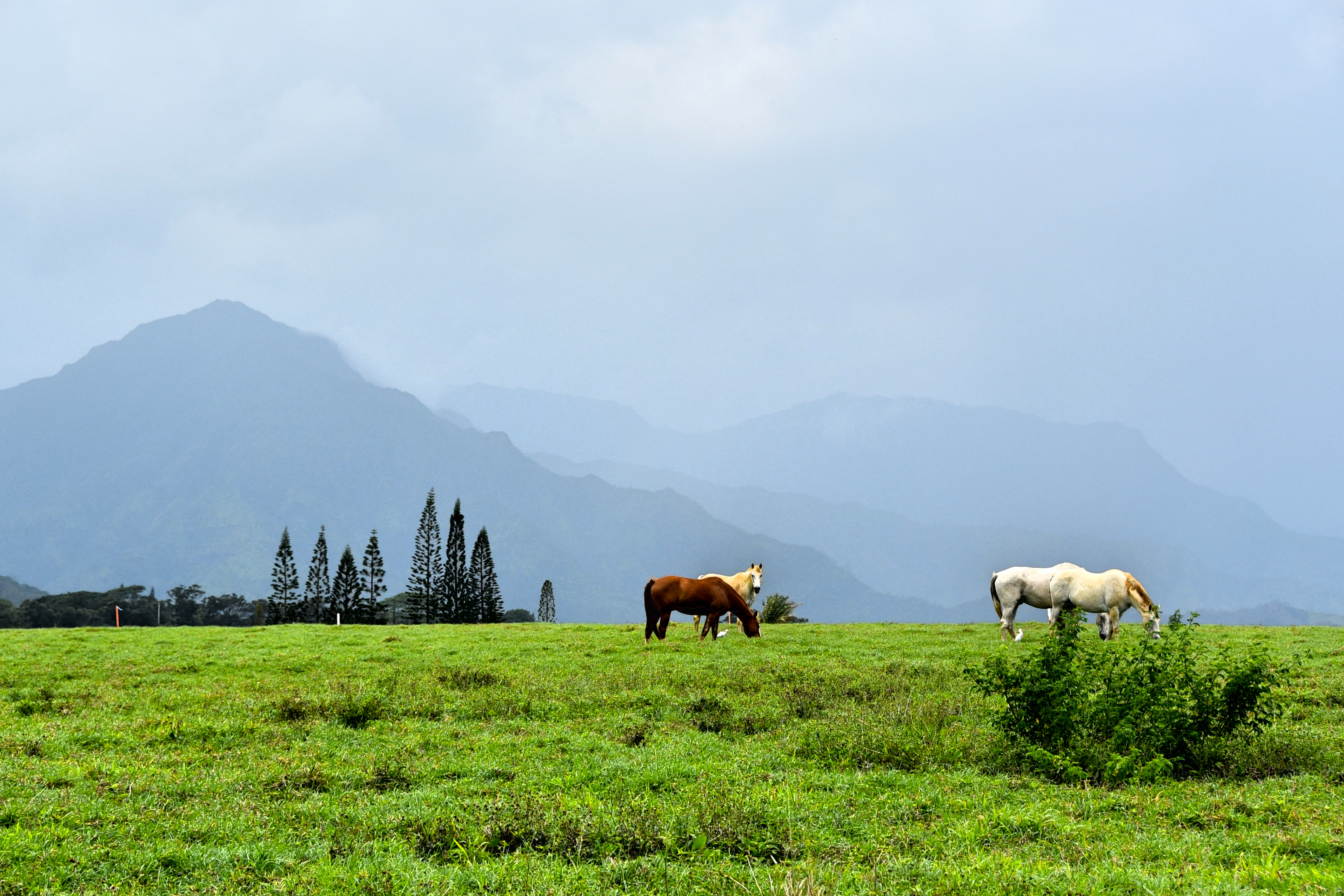
Fortified with a lunch and woozy from a pineapple-full of libation, I passed the wheel to Kaimi who drove us westward before ascending nearly 3,500 feet. With Clay and Ry following in the pick-up, we tumbled out an hour later into the parking lot of the Waimea Canyon Lookout. There, Kaimi walked to the lone concession stand where a salesman stepped out from behind a snack table. The two men approached each other and stopped a few inches apart. They put their foreheads together, noses touching, and inhaled deeply.
The salesman was another of Titus’s many nephews, born from among Titus’s 15 siblings whom I’d met all over the island. Titus greeted this nephew in the same way as had Kaimi: with touching foreheads and closed eyes. They were acknowledging one other in a manner much weightier than our mainland kisses and backslaps.
Throughout the week I’d experienced more than world-class surfing. I’d glimpsed this singular island way of life in the Hawaiian pidgin banter that Kaimi shared with his fellow surfers at Anahola; in the Hawaiian surfer who fetched us fresh coconuts after we surfed his home break or surf spot; in the hours that young Ry and his willowy girlfriend Avery Rowan whiled away sharing beers with us.
Just the previous evening, the guys and their partners had come over for a barbecue with Titus, a soulful singer, strumming a few chords on his guitar. Titus’s wife, Robin, told me then of her eldest daughter, Maluhia, a champion surfer and college freshman, and Maluhia’s efforts to reconcile how her competitive Stanford classmates treat others with the way people interact back home. I was beginning to appreciate Robin’s words. In Kauai’s small, supportive community, relationships aren’t stepping stones to something else.
There’s also danger in Kauai’s wildness, which I admired from the overlook of Waimea Canyon, a ten-mile-long, 3,000-foot-deep red earth gorge cleaved through the emerald plateau. Known as the Garden Isle, Kauai is the least populated of the major Hawaiian isles, with more than half of its 562 square miles covered by forests and nearly all of it green. From the canyon we drove higher to Koke’e State Park to view the Na Pali cliffs. Although the sky above was clear, from our 3,600-foot-high vista point, when I looked down I only saw cottony clouds. The Na Pali bluffs came to life instead in my imagination as Clay shared grizzly tales of hikers dying there.
Throughout the week Clay, a former lifeguard, had recounted his mostly successful rescues of drowning swimmers. Titus, in turn, had described the capture of the shark that bit off famed surfer Bethany Hamilton’s arm, and his own well-documented surf injury. During a big wave competition, a mammoth wave had slammed atop him, shattering his femur. Fellow surfers had risked their own lives to save Titus, holding him for 45 minutes on a swell-battered reef until a helicopter finally arrived.
Clay and Titus still take the ultimate risk every time a jet ski tows them into monster wave. Photographs of them slicing across the watery goliaths unnerved me. Contemplating the dangers lurking in this breathtaking isle, I felt how immediate their reality is. Life for them occurs in the present.
And my own present called for more surfing, even as the sun was dipping lower. We drove back to sea level, stopping at the unassuming Ishihara Market in Waimea town for fresh tuna and salmon poke — Hawaiian ceviche. It was late afternoon when we parked near Pakalas, a murky break by a fish-filled river mouth. Showers trickled through the thicket of trees as we passed curious bulls brought there decades ago to scare away trespassing surfers. I was aware that Pakalas is notorious for shark sightings, but I didn’t mention it to my girlfriends.
Surfing with Titus, Clay and Kaimi, I had an admittedly willful sense of security; they were always watching out for us. Ry was onshore, covering his camera and telephoto lens with an umbrella. No one else was in sight. I paddled out for long minutes to where the endless waves were breaking, cleanly and potently. After a false start, I caught the next wave, popped up and glided leftwards down the line or across the wave face, cutting back to stay near the crest. Under a pewter sky, the whipping rain was obscuring my vision, but I carved the wave up and down, on and on, until there was no wave left to ride.
As I paddled back out towards my fellow surfers, elation gripped me. The darkest and possibly most dangerous day in the ocean was also the most exhilarating. Back at the roadside, after the rain ebbed and dusk arrived, it seemed none of us could let the day end, popping open beers by the minivan. As we tailgated, pick-up drivers heading home shouted greetings at Titus. Eventually we trekked the 70 miles back to our rented cottage where I collapsed into bed and awoke again at dawn the next day.
On the last night in Kauai, we shared small plates and sipped margaritas at Hanalei’s trendy Bar Acuda. Outside after dinner, Suzie asked Titus about the way he’d greeted his nephew at Waimea Canyon. Titus explained that honi is a respectful salutation to exchange one another’s ha, or life energy. Titus and I put our foreheads together, noses touching, then closed our eyes and inhaled at the same time.
But Titus, Kaimi, Clay and Ry had been sharing their energy all week long. They had shown me Kauai’s elusive essence, and I carried it home in my lungs and in my heart.

Titus Kinimaka runs the Hawaiian School of Surfing in Hanalei, Kauai
Photographs by Ry Cowan and Noelle Salmi
*
/
 Noelle Salmi has lived on five continents, and surfed on four of them. She is the author of several Frommer’s guidebooks, and her writing has appeared in the San Francisco Chronicle, Jornal do Brasil, Bay Area Parent, Indagare Magazine, Tablet Magazine, and other online and print publications. For more visit NoelleSalmi.com.
Noelle Salmi has lived on five continents, and surfed on four of them. She is the author of several Frommer’s guidebooks, and her writing has appeared in the San Francisco Chronicle, Jornal do Brasil, Bay Area Parent, Indagare Magazine, Tablet Magazine, and other online and print publications. For more visit NoelleSalmi.com.
The post Wild Kauai: Surfing With A Hawaiian Legend appeared first on The Expeditioner Travel Site.
]]>The post Video Travel Guide To Malaysia appeared first on The Expeditioner Travel Site.
]]>In this travel video travel guide to Malaysia, I travel to Malaysia’s capital city, Kuala Lumpur, and to Terengganu, the country’s second-largest city.
I start off my trip by exploring Kenyir Lake, located just west of Terengganu, which is actually the largest man-made lake in Southeast Asia (it’s the size of Singapore). I head to the far end of the lake by speedboat to go trekking into the hilly jungle where I come across a school of hungry fish waiting for eager tourists like myself to provide them with a cheap snack. I then head back on the lake to explore the many islands that call this lake home.
Next, I head back onto the water — this time to the ocean — to do a little squid jigging as part of the first annual Terengganu International Squid Jigging Fest. Squid jigging, for those of you that don’t know, is the act of fishing for squid by hand with a line and hook, something I have questionable skill doing.
Back on dry land, I explore the market in Terengganu, one of the best places to find fresh seafood in the entire country, and try some of the region’s favorite desserts and iced coffee.
For the second half of the video, I head east to the capital city of Malaysia, Kuala Lumpur, where I — what else? — find some street food in the famous Chow Kit neighborhood, followed by a little more food in Kampung Baru, a sleeping Malay enclave flanked by the city’s downtown tower.
I then take the monorail (!) to explore the Petronas Towers and the KL Tower, two of the city’s most famous landmarks, followed by dinner in Jalan Alor, the city’s famed outdoor street food district.
Finally, it’s time for a little rest and relaxation back on the west coast of Malaysia at the island of Redang, one of the country’s most beautiful tropical islands, where I get to experience what beach life is like in Malaysia.

/
 Matt Stabile is the Founder and Editor-in-Chief of The Expeditioner. The Expeditioner began in 2008 and is headquartered in New York City. You can read his writings, watch his travel videos or contact him at any time at TheExpeditioner.com.
Matt Stabile is the Founder and Editor-in-Chief of The Expeditioner. The Expeditioner began in 2008 and is headquartered in New York City. You can read his writings, watch his travel videos or contact him at any time at TheExpeditioner.com.
The post Video Travel Guide To Malaysia appeared first on The Expeditioner Travel Site.
]]>The post Feeling Tiny In Colombia’s Tayrona National Park appeared first on The Expeditioner Travel Site.
]]>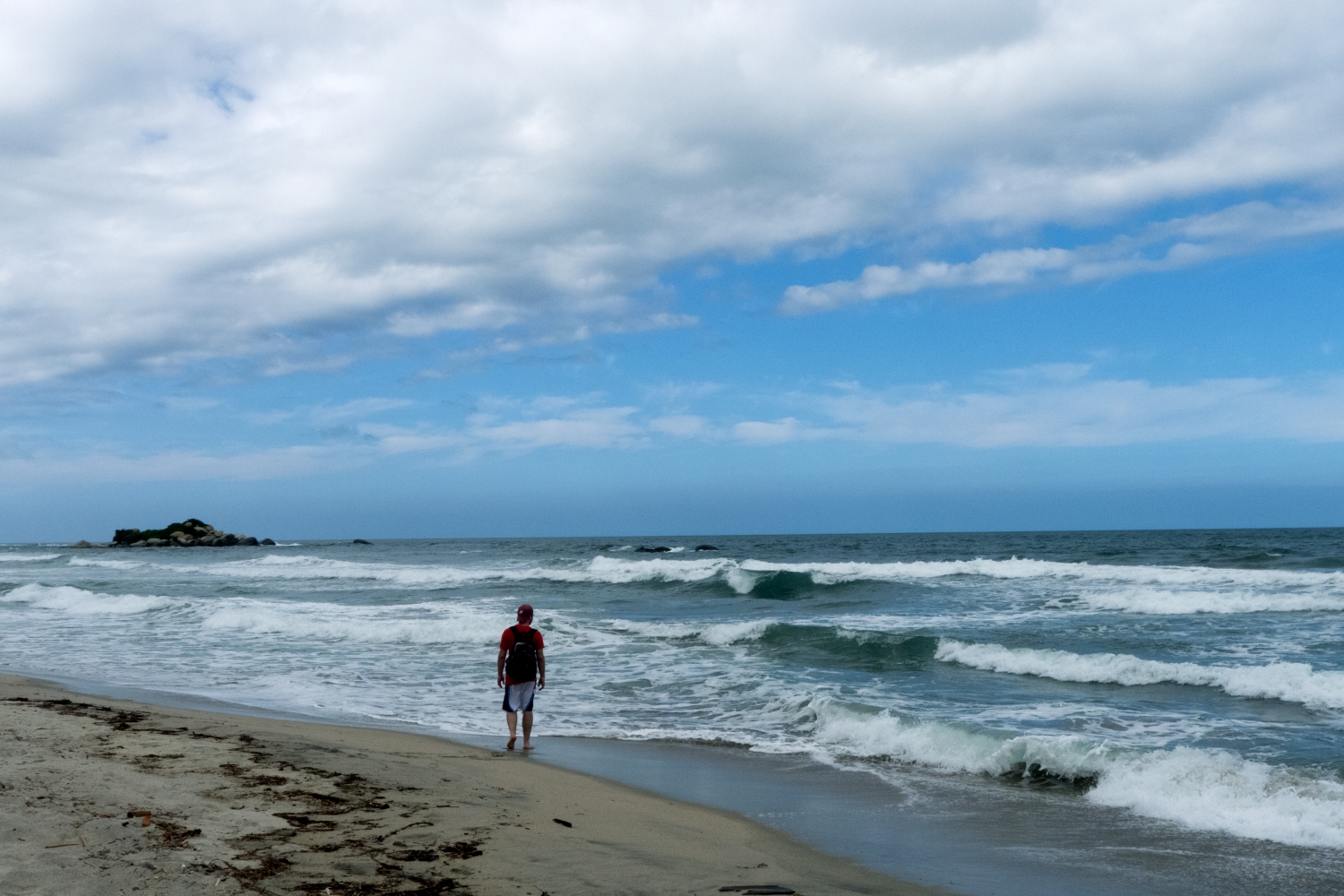
We stood at the entrance to a lush, tropical forest and confronted a simple yet profound choice. Do we proceed on foot, hauling our backpacks in the already thick morning air, or do we pay a local for the pleasure of mounting a time-worn horse?
We picked the budget option and started the hour-long walk into Parque Tayrona, a protected stretch of the Caribbean coast in Colombia. The park, which is really a beach cleaved from the outside world by dense forest, attracts a steady stream of foreign backpackers and appreciative locals. But even with nearly 300,000 people per year stopping by, it doesn’t feel crowded.
Or at least it didn’t in November 2011, when I visited there with an old friend and longtime traveling companion, Will. We had been friends since college where we bonded over spiced rum and grunge rock, and where later reached bro-for-life status when we both ended up in New York City after graduation. We had already road-tripped down the East Coast to New Orleans and across Southern France and Spain. Now we were in Colombia for a few weeks.
This may not be true for everyone, but I find I can divide travel into two types of experiences: city exploration and nature excursions (the guidebooks seem to back me up on this). We tried to mix things up, going from the intimidating urban sprawl of Bogota to a place called Valle del Cocora, where lanky Andean palm trees grow more than 100 feet in the air, making the humans underfoot look very insignificant. From there, we hit up some mountain-top thermal baths before partying in Medellin and Cartagena.
The time had come to refresh the soul (and the liver). Hence, to Tayrona.
The great part about Colombia is that two weeks actually do give you enough time to hop and skip your way across the country, even if you take the buses as we did. From Medellin, we downed some almost-too-easy-to-procure sleeping pills and took a mind-bending 24-hour bus ride to Cartagena. I fell into a dope-induced stupor but can recall images of Will vomiting into a small plastic bag (pills + switchback turns = regrettable mistake) and I believe I spoke sharply at the young boy sitting behind us, who was picking my pocket in a dream world.
We arrived just in time for Carnival festivities.
The scene was festive and chaotic: the locals packed the streets of an old, weathered neighborhood outside the city proper, sipping from small bottles of aguardiente, Colombia’s national paint remover, and squirting the gringos (us) with aerosol cans of foam and bags of water. Every now and then, someone would throw a deafening firework in our direction.
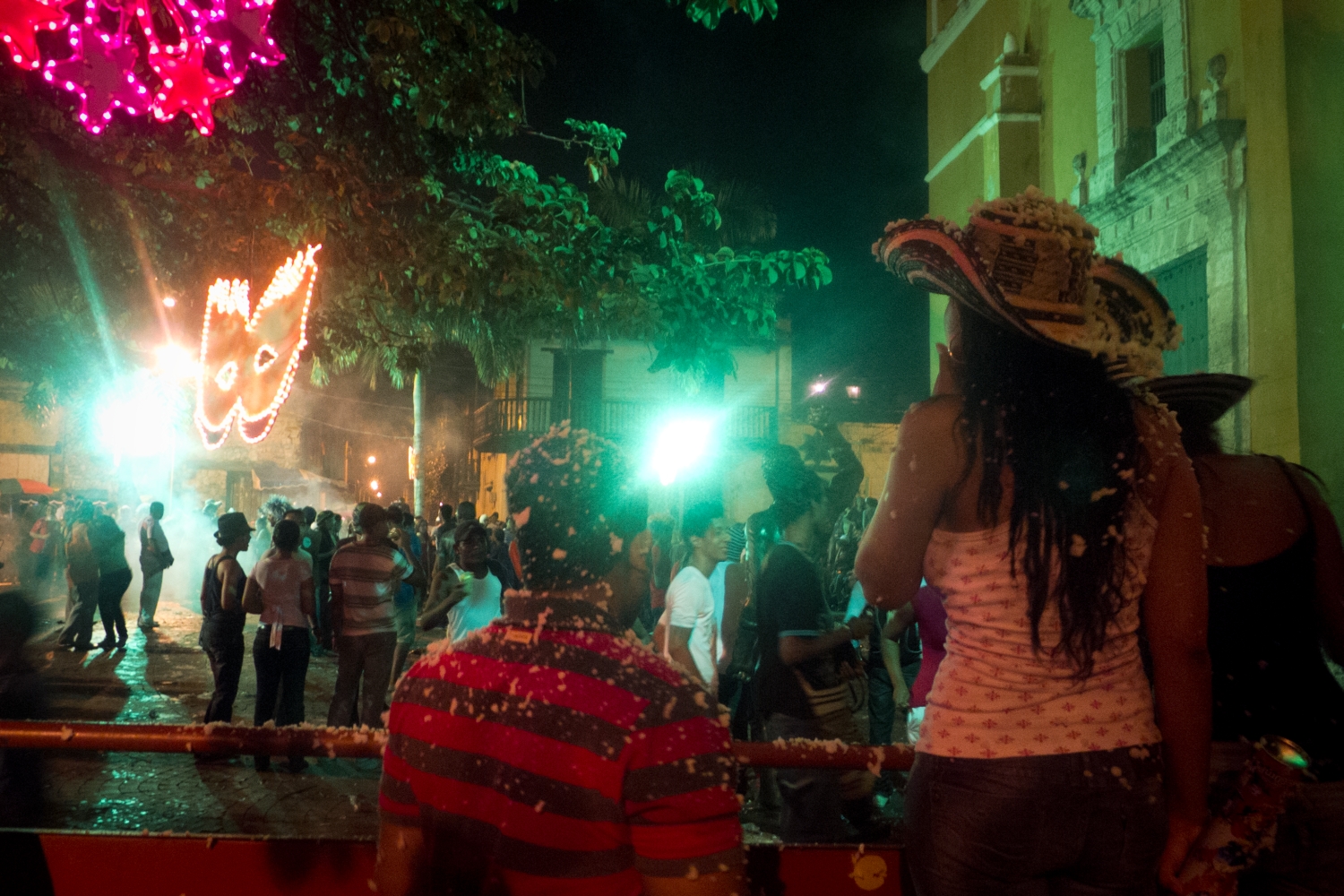
Somewhere on the spectrum of foam facial to flashbang, Will’s tolerance broke and he turned back for the hotel. I stayed out and danced in the streets with some German guys and a group of Colombian 20-somethings until one of the Germans got in fight with a hot dog vendor and it seemed wise to slink away to the hotel (after buying a hot dog myself, from a separate vendor).
We both felt pretty tapped out the next morning when we hopped onto another bus, this one to Santa Marta, a colonial city further up the coast that serves as a jumping-off point for Tayrona. We had probably hit the point of the trip where we were a little tired of each other, so a beach with no agenda seemed like a good idea.
The only issue was that it was Will’s birthday. I wasn’t about to sing to him on a moonlit beach or anything. But we were in our 30’s. I assumed it didn’t matter much to him.
The hike into the park was more challenging than expected. This was November and it had been raining a good deal, so the path was sometimes more mud than solid ground. The mounted travelers seemed to mock us even in their absence, since the path had been beaten down with the regular mash of hooves and repaved with horse shit.
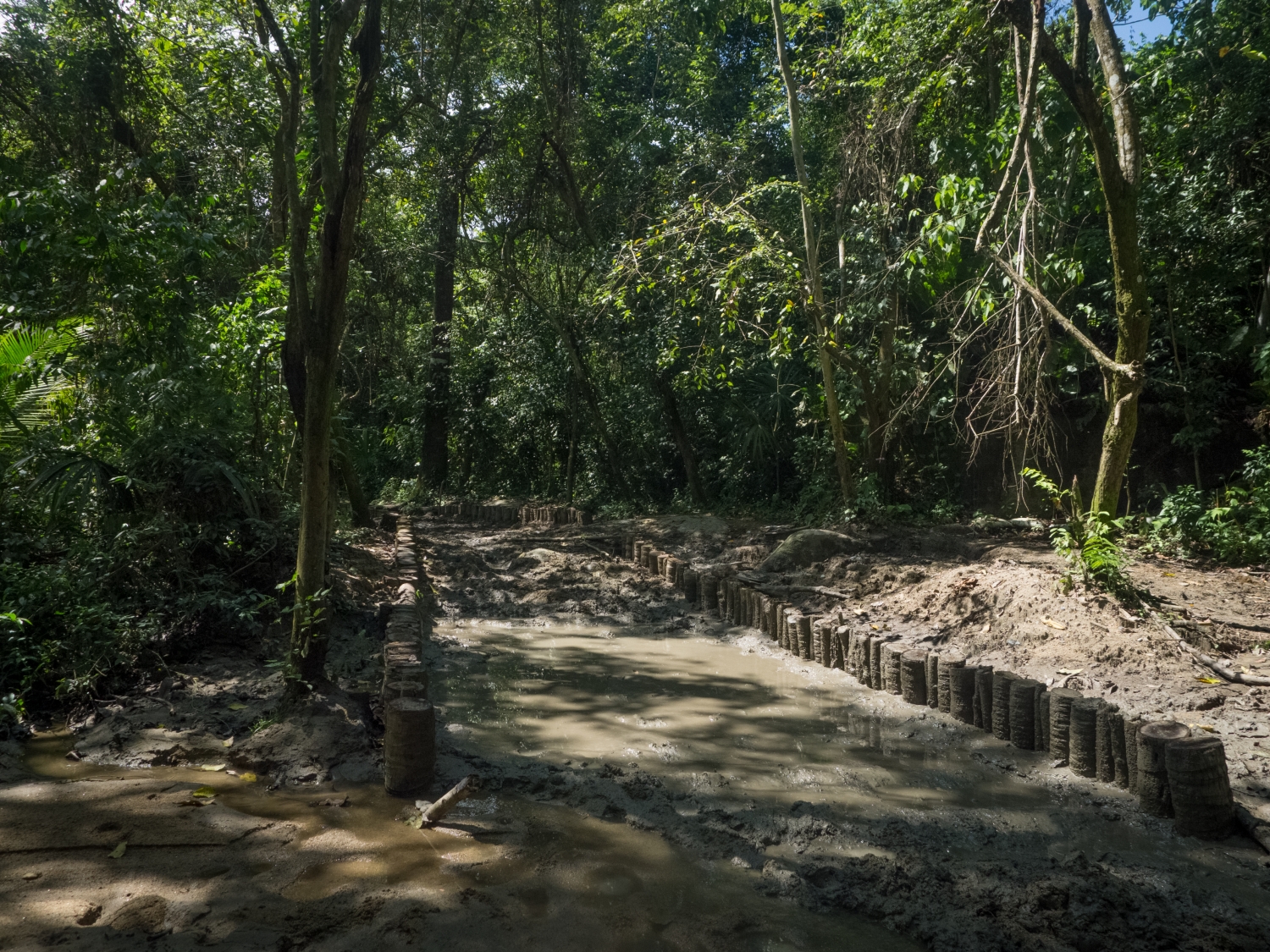
We stopped for a few breathers (the humidity!) and took in the surroundings. On the ground, a river of tiny green leaves moved up the path, carried by industrious leafcutter ants. We followed it with our eyes and the train of ants extended a long, long way.
My daily commute at the time wasn’t much different. I was working in the New York suburbs, wrestling with Long Island traffic on a daily basis, struggling to make rent, and feeling a lot like one of these tiny laborers. Presumably the ants weren’t gathering the preparations for a keg party.
Will, on the other hand, worked as a software engineer and spent the winter months away from New York, typically somewhere south of Texas. I can’t recall seeing an insect that would serve as a stand-in for his lifestyle, but maybe there’s some sort of dragonfly out there that fits the bill.
A little while later we reached the beach, ready to put down our things and take a dip. We passed several cabins, thinking it would be best to stay closer to the water, and eventually stopped at a beach campsite. A guy named Carlos came and greeted us. He showed us around the site, which consisted of an open-air pavilion with a television and tables for dining, as well as a sleeping area — a thick tree trunk with 8 or 10 hammocks ringing it like a pinwheel.
He said to throw our stuff in whichever hammock we wanted to sleep in. The cost was around $5 for the night. Easy enough.
We changed into our bathing suits and listened to Carlos riff on American politics (not a fan of George W. Bush . . . go figure) before we left for the water.
I’ve never felt that words are the best way to describe a landscape, especially if photos are available. But I would say this: the beauty of Tayrona felt both serene and brutal. The roar of the surf hit you first, but the surroundings stole the scene. The beach was ringed by a palm-studded forest that might remind an ignorant American (like me) of a movie about the Vietnam War. I imagined fleeing in a chopper while my compatriots zoomed by in fighter jets, setting off fiery explosions around me.
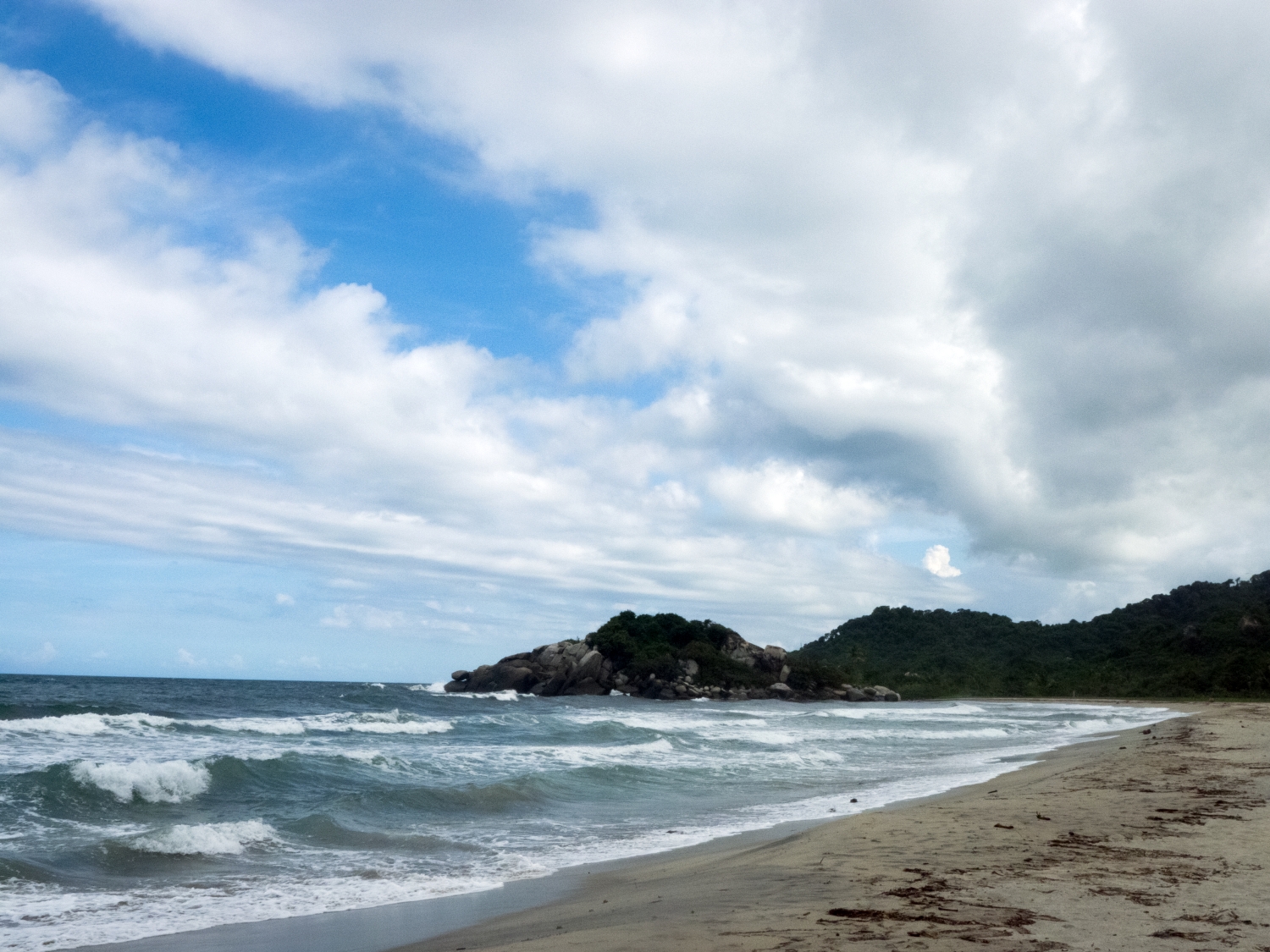
Gray boulders the size of a family sedan sat at the edge of the water — they weren’t going anywhere for a long, long time. We waded into the water up to our knees, but not much more. Carlos had told us not to swim near the campsite and one mention of the word “drown” was all I needed to hear.
We wandered down the beach, not saying much. What was there to say? This place was overwhelming. Everything was so alien to our daily lives, which were largely spent at keyboards (or in my case, in traffic). Through the trip, Will had been the photographer, but for a moment, we swapped roles and I snapped photos of him as he climbed onto one of these massive boulders. Something about those rocks made me think about the universe and whether it viewed me as anything more than a flimsy leaf struggling to hang on for another day.
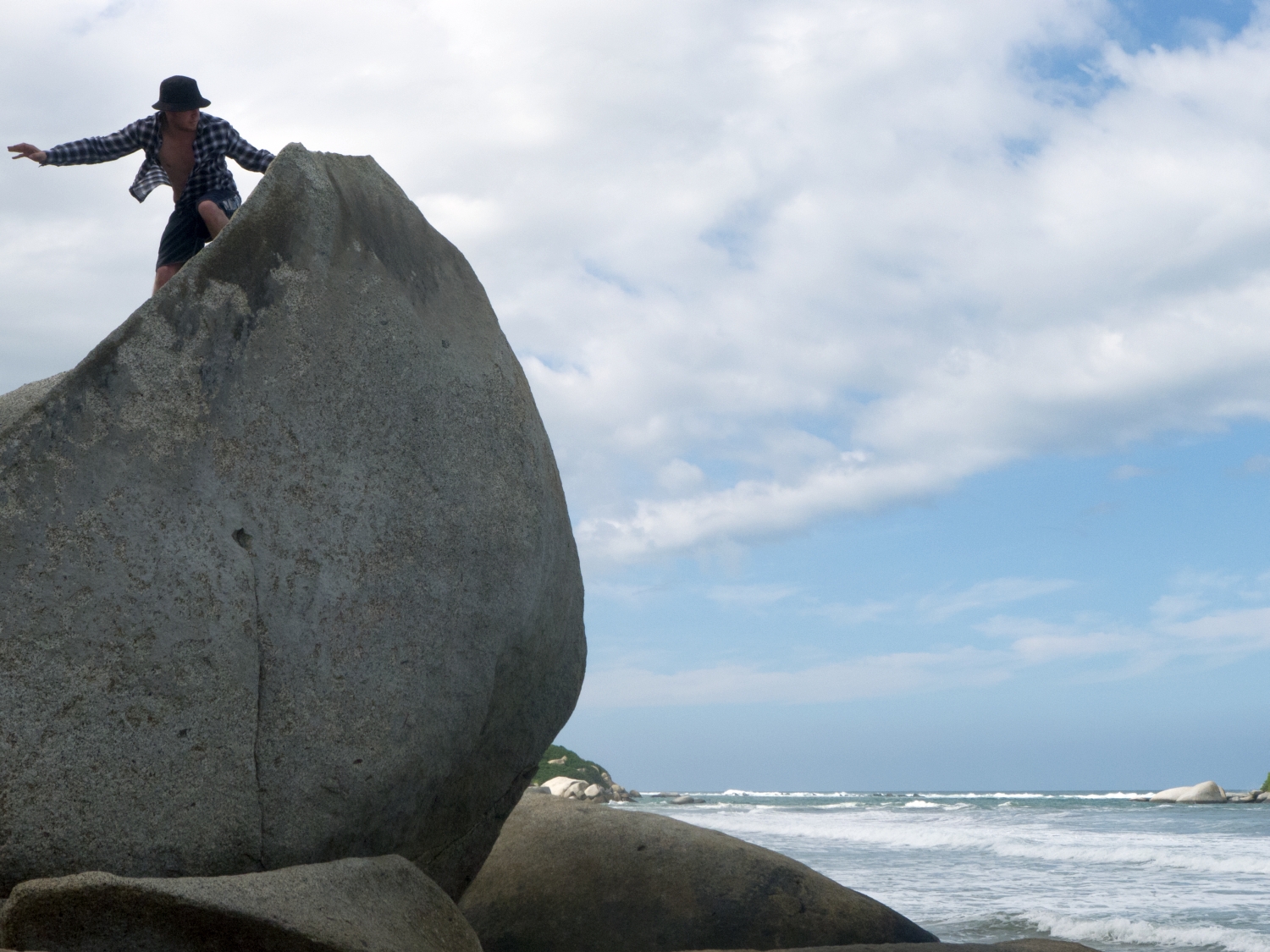
There was supposed to be a swimming beach somewhere down the coastline, but even after a decent walk, we couldn’t find it. The beach seemed to end; we ran into a wall of rock and palm trees. After wandering in muddy forest for 30 minutes or so, we backtracked and got directions from some German tourists.
The swimming beach was pristine and, at this point, a near-necessity, what with the sweating and exasperated tromping through coastal muck and such. The water shimmered the cool blue of a mellow mouthwash. We waded in.
And here’s another thing: it was nearly deserted. A pair of slim women stood down-beach, out of earshot. We didn’t swim out too far (again, the drowning thing) but it didn’t matter. This beach wasn’t for working out, it was for enjoying.
A long while passed there in the water. We eventually chatted with the women, who were both models, one retired, one still in the business. The retired one now owned a bar in Santa Marta and invited us to stop by when we got back to town.
We walked further into the park and reached a sort of mega-campsite where it appeared most of the backpackers flocked to see the sun rise in the morning. We didn’t stay here too long. The sun was still shining brightly, but it was past its peak.
When we returned to our camp, it was nearly dinnertime. We rested a bit in the hammocks and then sat down to eat. Carlos wasn’t around, but another guy running the kitchen brought me an enormous fried fish that made me very happy. While we ate, the other 7 or 8 guys watched a comedy show on the television.
After dinner, there wasn’t much to do. We wandered around a bit, looking for the type of unexpected off-the-hook party you might find in a beer commercial. No dice.
Instead, we made our way back to the campsite. The other guys staying there seemed to be laborers — I saw a couple of them cutting down a tree during the day — and they were watching a hard-core porno. We settled down into our hammocks to the sound of an enthusiastic gangbang.
Sometime later, everyone went to sleep. Will couldn’t nod off and asked if I wanted to head to the beach. Normally, I might have taken him up on the offer, but we were under mosquito nets on our hammocks and I deceived myself into thinking I might actually fall asleep. I told him to go ahead.
In the morning, I woke up to the sound of some chickens who clearly didn’t understand their place on the food chain. My ankles were itchy and when I rolled out of the hammock, I saw a solar system of red bumps around my knee.
I took a piss on the outskirts of the camp, near a blank-faced donkey. Everyone else was awake and gone except Will, who slept a bit longer. When he woke up, he was talking about the night before.
“It’s weird. It was like the best and worst way to celebrate a birthday,” he said.
“Oh yeah, happy birthday,” I replied.
He muttered something dismissive and went on with the story.
“There was lightning across the beach, no one out there. It was the most amazing shit I’ve ever seen in my life,” he said. “But then on the flip side, when I got back to this shitty-ass hammock, 5 dudes are fucking snoring like a symphony.”
I mentioned the red dots.
“Oh shit, you have those too?”
Will took a picture on the beach that night. There we were: standing on the edge of a continent. A storm rolled past. Waves maintained their endless roar. After the storm, there was a dazzling display of stars.
In this setting, we barely existed.
We hiked out of Tayrona and returned to Santa Marta, where we met the bar owner and her friend for drinks. We nursed whiskeys in an open-air courtyard and chatted with our new-found acquaintances and the handful of patrons.
I wondered about Will’s birthday: did he care that we spent it on a remote beach instead of downing shots in Medellin? Was I a bad friend for not taking these details into consideration? Tayrona was almost anti-birthday in a way, the sort of place where you seem very insignificant in the grand scheme of things. I decided not to worry about it.
The red dots on our legs kept itching for a few days. As it turned out, they were flea bites.

Photos by Will Benedict
/
 Ted Hesson is a multimedia journalist based in Washington, D.C. For more of his work, visit TedHesson.com.
Ted Hesson is a multimedia journalist based in Washington, D.C. For more of his work, visit TedHesson.com.
The post Feeling Tiny In Colombia’s Tayrona National Park appeared first on The Expeditioner Travel Site.
]]>The post 22 Bizarre Things You Didn’t Know About Thailand appeared first on The Expeditioner Travel Site.
]]>
Here are 22 bizarre things you didn’t know about Thailand, just in case you need a little more motivation to travel there yourself. Also, it’s infographic form, which let’s face it, is the best way to process information these days.

/
 Matt Stabile is the founder and Editor-in-Chief of TheExpeditioner.com. You can read his writings, watch his travel videos, purchase the book he co-edited or contact him via email at any time at TheExpeditioner.com.
Matt Stabile is the founder and Editor-in-Chief of TheExpeditioner.com. You can read his writings, watch his travel videos, purchase the book he co-edited or contact him via email at any time at TheExpeditioner.com.
The post 22 Bizarre Things You Didn’t Know About Thailand appeared first on The Expeditioner Travel Site.
]]>The post When A Lost Guatemalan Taught Me To Walk On Water appeared first on The Expeditioner Travel Site.
]]>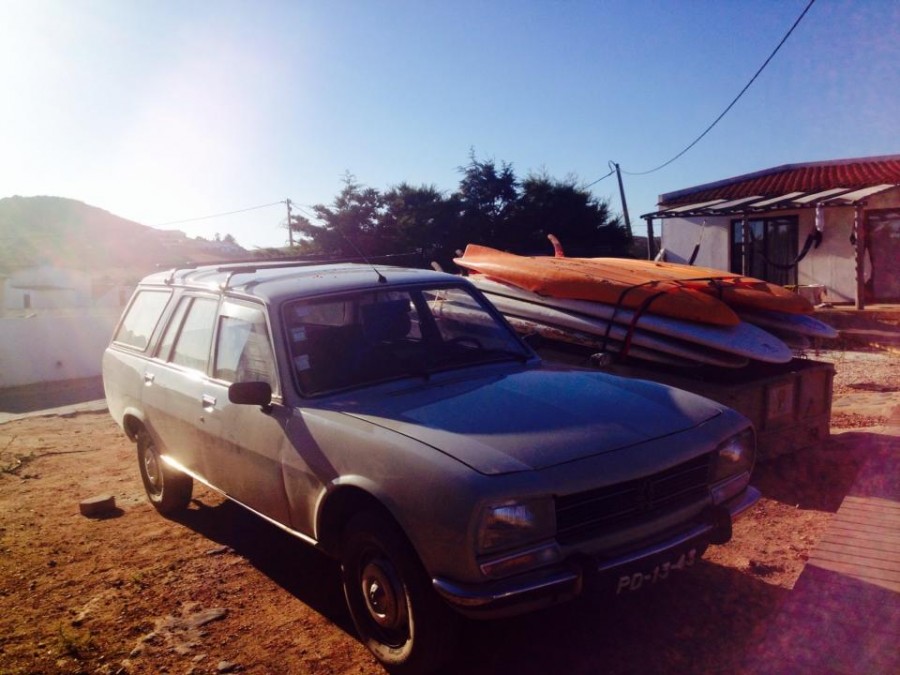
It has been three years since I last saw Loch. We parted on a train somewhere under London, thousands of miles away from the town in Guatemala where we had first met. As the tube doors slid shut on an era, I did not imagine that it would be near Sagres, Portugal’s most Southwesterly tip, that we would meet again.
Yet here I am, in the small village of Raposeira in the Algarve, pushing open a salt-encrusted wooden gate to the Good Feeling Hostel where, according to a hurried e-mail exchange, I am to be reunited with my old friend who has taken up residence as a stand-up paddle instructor.
I barely recognize him. After months of surfing and sun, he has been transformed into a bronzed and hulking man of the sea.
Inevitably, he is on his way to take a couple of Spanish girls to check out the sunset from a suitably romantic cliff-top location. Yes, despite the passage of time and the consolidation his pectoral muscles, it was clearly the same old Loch.
The battered Peugeot retreats into a cloud of dust, bearing with it the two unsuspecting lovelies and one Central American lothario. I am left standing bemused and backpacked to watch the sun dip over a backdrop of whitewashed houses.
Shit. This was not the welcome I had anticipated.
It was not long, however, before I was greeted by resident chef, surf and jujitsu instructor, Carlos, and the sunshine vibes started to get the better of me. Handing me a beer, he explains a bit more about the way things roll at Good Feeling. Namely, in a relaxed fashion.
I cut some veggies for the communal dinner, before settling myself in a hammock to ponder the week ahead. I did not yet realize that, in my quest for a long-long friend, I had stumbled upon a jewel in the Algarve: a haven of breathtaking scenery, outdoor adventuring and toned body mass.
The Perfect Natural Setting
This area of the Algarve is dotted with national parks, leaving the coastline to exist in its natural and rugged state, unfettered by tacky holiday homes or ugly resorts. A number of the best beaches still remain relatively inaccessible, especially at high tide, which lends plenty of opportunity to explore.
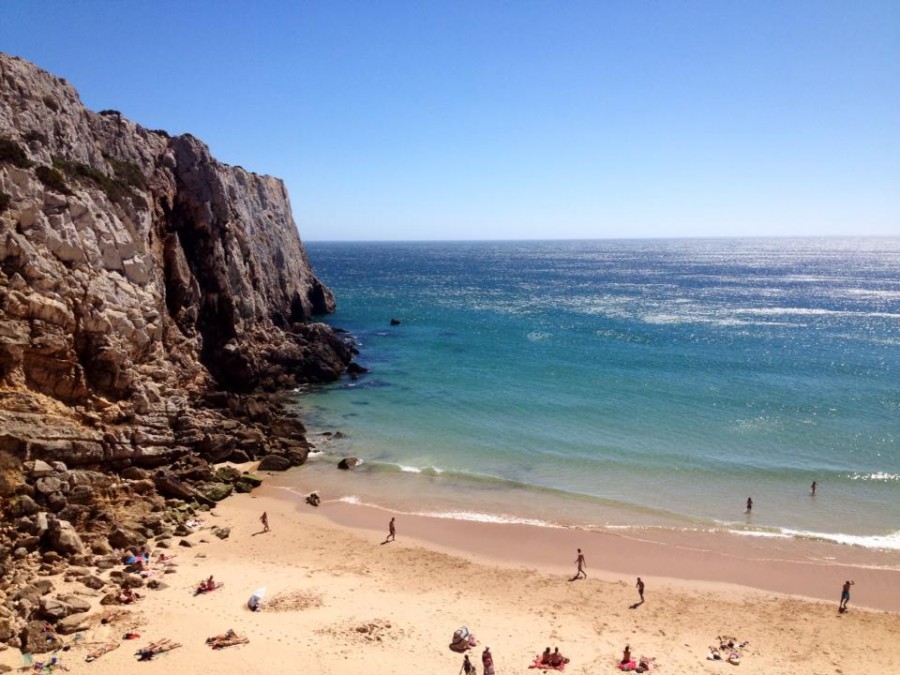
A few of the area’s most noteworthy bathing spots include Beliche, Figueira and Barranco. Barranco, otherwise known as the “hippie” beach, is a stunning little bay, glistening emerald green — albeit freezing cold — water. And naked people.
Apart from a high saturation of exposed genitalia, one of the main attractions of this bay is as the starting point for stand up paddle tours.
Stand Up Paddle
Stand up paddling, or SUP as the kids are calling it, is actually a lot more fun than I had given it credit for, at least in this part of the world. Dramatic cliffs and submerged caves make for an active paddling experience, providing plenty of opportunities to jump off things and swim under things. Especially when your paddle instructor goes by the name of Loch.
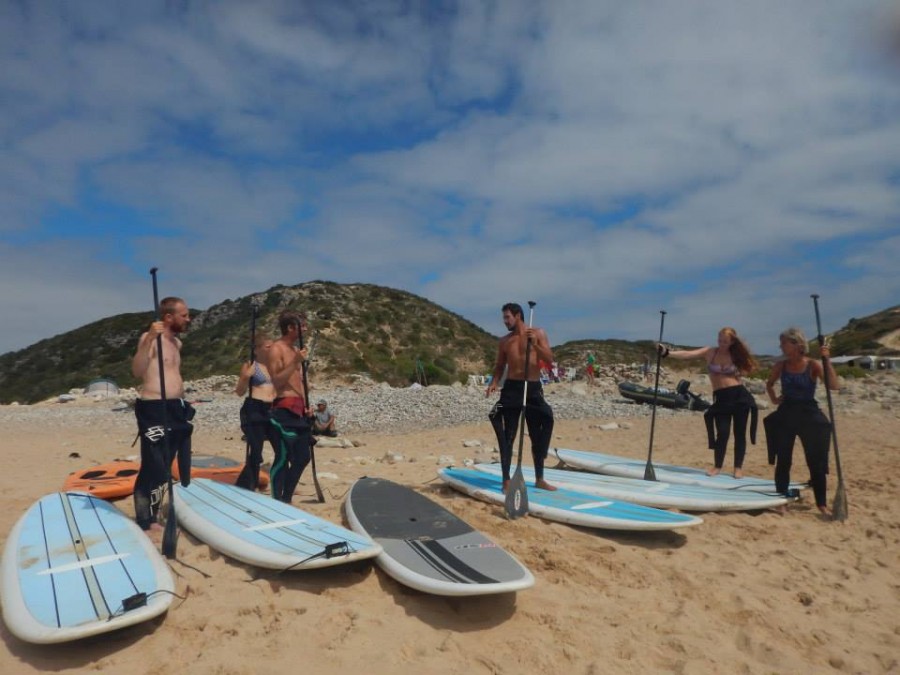
We began with a brief introduction to the basics. These seemed, indeed, fairly basic but were accompanied with a warning: according to Loch, we would forget everything we had been taught when things “got real.”
Undaunted, we set off on our boards, kneeling against the wind resistance and heading towards a corner point which would allow us to escape the gentle swell generated by an offshore breeze. As predicted, however, instead of steering gently to the shelter at the opening of the bay as instructed during our basic training, one girl set out merrily into the open ocean. And, it seemed, to her doom.
[Dramatic Pause]
But fear not dear reader, of course she came to no harm. This diversion merely presented our very own Loch the opportunity slip into his role as The Alpha Male, a part to which he seems to have grown quite enamored.
He single-handedly dragged her to shore, before providing the rest of the group — including the newly infatuated damsel — with a master-class in rock scaling, cave swimming and yogic posing.
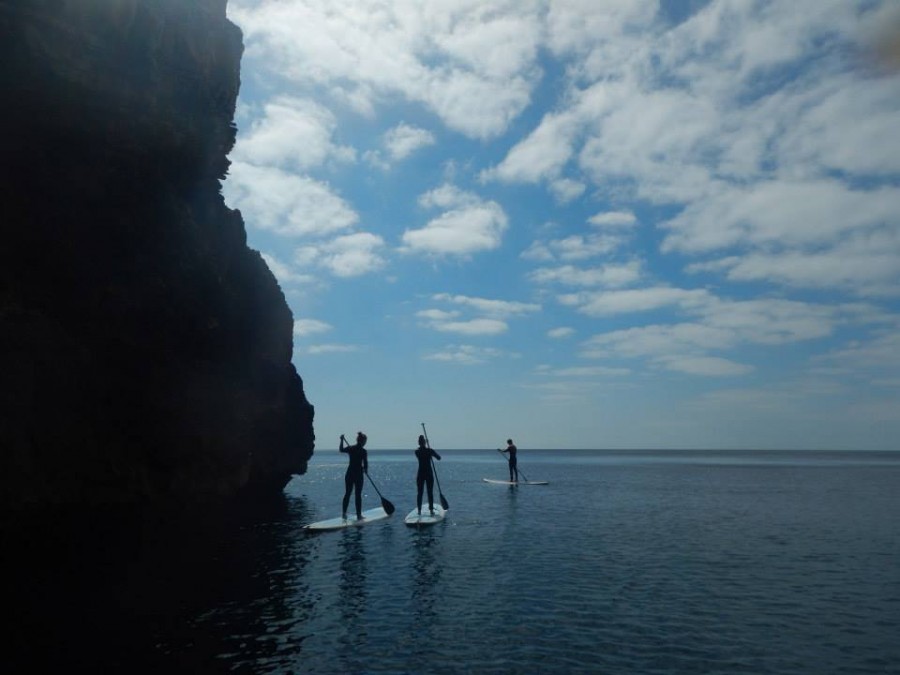
The guy was clearly in his element, and who could blame him? This was a far cry for the long dusty commute from an office in Guatemala City every evening. I was beginning to see where his love for the paddle board was coming from.
I too was starting to feel at home in a wet suit and was keen to take my burgeoning relationship with water sports to the next level. It was time to get my surf on – she says, trying to be cool but sounding like a geriatric.
I Use the Term “Surf” Loosely
Despite a few brief periods in my life dedicated to the cultivation of a beach-chic image, I had never actually surfed before. Furthermore, my beginner’s board could have doubled up as the wall of a sturdy garden shed, hindering any projection of myself as an accomplished beach bum.
Nevertheless, I was soon wielding surf terminology with liberal abandon. This did little to nurture my credibility, considering the generic usage of “gnarly” was accompanied an unspectacular 10seconds of standing prior to a rather more spectacular face plant.
Kelly Slater probably probably doesn’t need to be watching his back just yet, but what I lacked in skill, I made up for in enthusiasm, trying out a number of beaches in my quest for aquatic glory. For those who know their hang heels from a goofy foot, the locals suggest Ponta Ruiva, Amado, Boudeira and Arrifana.
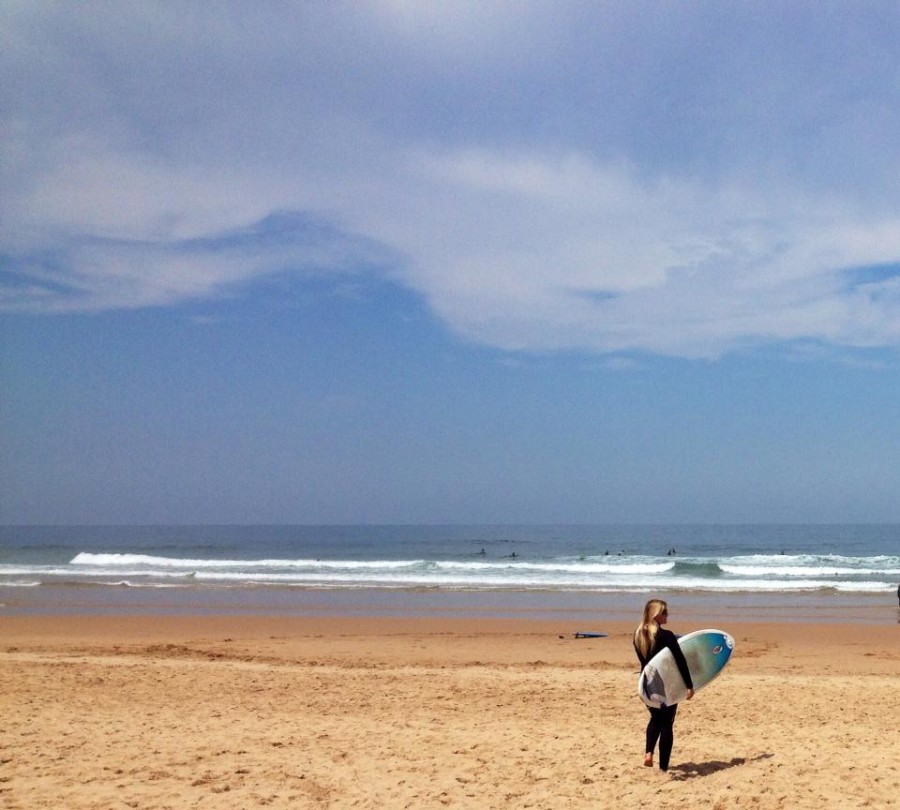
Horseback Riding
I have been an avid horse rider since I was a kid and I attribute it with some of my happiest memories, and my experience of hacking in Sagres was no disappointment.
Nidia runs Equivicentinos, a low-key operation just near Vila do Bispo. Only working with small groups, she offers a bespoke experience catering to the ability and confidence of each rider. It is clear that this is a woman who is doing something she loves, and just so happens to be making a living out of it. At a couple of points during our two-hour trek she actually seemed rather surprised to see me — herself absorbed by the dramatic vistas afforded by carefully scouted lookout points.
Unlike so often with riding schools, we were not limited to simply trailing along behind one another, but galloped through forest paths blanketed in pine needles and along cliff-top ridges, the sound of the waves breaking below echoing along the rocky coastline.
We even took the horses to paddle in the sea, letting them snort and splash in the water to the delight of holiday makers and, of course, the omnipresent community of naked people.
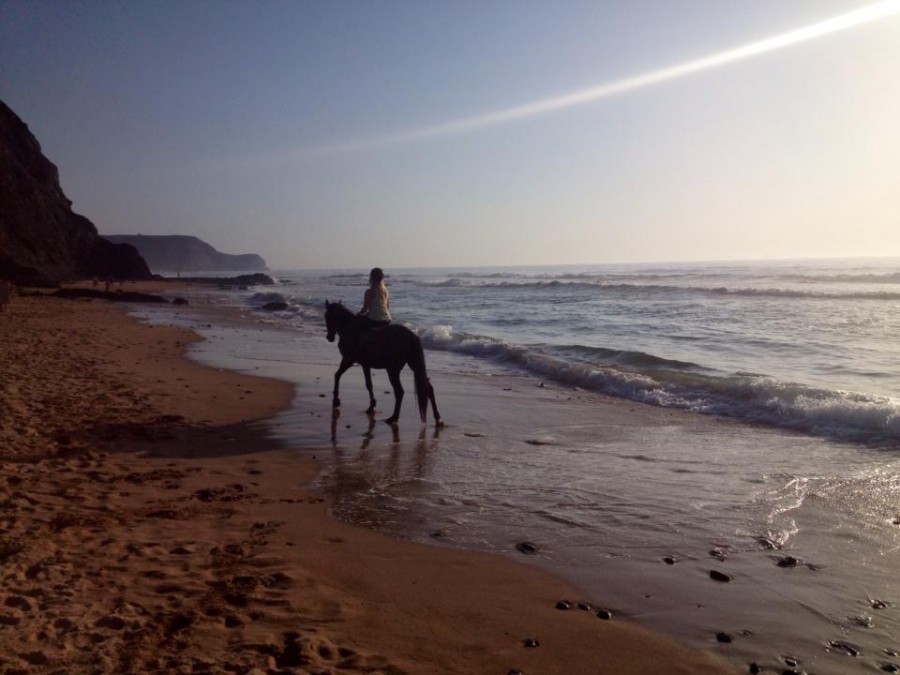
As I leaned my head back to enjoy the evening rays on my face, I realized why it was that my friend had chosen to give up the city life and head for the horizon on a paddle board.
Surely this is how humans should live, outside, at one with the elements, shedding their pudgy computer-addled bodies in favor of the sun-kissed, of the contentedness of aching muscles that have worked hard or the radiance you exude after a day of physical exertion.
Sleep with one eye open Loch, it might not be long before I return to crash this Casanova’s beach party.

/
 A restless Brit with big dreams and limited cash flow, Hannah is a freelance journalist and student. She is currently being sponsored by the European Union to take a Masters in Journalism and International Politics at the University of Amsterdam/University of Santiago, Chile, and the Danish School of Journalism. Check out her site DontDoNothing.com.
A restless Brit with big dreams and limited cash flow, Hannah is a freelance journalist and student. She is currently being sponsored by the European Union to take a Masters in Journalism and International Politics at the University of Amsterdam/University of Santiago, Chile, and the Danish School of Journalism. Check out her site DontDoNothing.com.
The post When A Lost Guatemalan Taught Me To Walk On Water appeared first on The Expeditioner Travel Site.
]]>The post Is There Anywhere Better To Shoot Video Than Brazil? appeared first on The Expeditioner Travel Site.
]]>In honor of the World Cup wrapping up this weekend, I thought I’d feature this amazing compilation travel video from Brazil (as if the seemingly never-ending parade of enviable panoramic shots of Copacabana Beach and aerial views from Christ the Redeemer that have blanketed the airwaves recently haven’t already caused every sane person who hasn’t been to Brazil to scramble to their computer to check airfare prices to the country).
Made by videographer Tom Pinsard, this beautiful video was shot while Tom and his girlfriend were in Brazil for two weeks during the World Cup (they were wrapping up a six-month trip around Asia and South America).
Amazing footage as it is, unfortunately for us (and, well, Tom), one of his cameras was stolen while in Brazil, so he had to make do with the video he had already captured.
For those wondering, the video was shot using a combination of the Panasonic Lumix DMC-GH3, Sony Cyber-shot DSC-RX100 II and GoPro 3.
[Brazil by Tom Pinsard via Vimeo]

/
 Matt Stabile is the founder and Editor-in-Chief of TheExpeditioner.com. You can read his writings, watch his travel videos, purchase the book he co-edited or contact him via email at any time at TheExpeditioner.com.
Matt Stabile is the founder and Editor-in-Chief of TheExpeditioner.com. You can read his writings, watch his travel videos, purchase the book he co-edited or contact him via email at any time at TheExpeditioner.com.
The post Is There Anywhere Better To Shoot Video Than Brazil? appeared first on The Expeditioner Travel Site.
]]>The post Greetings From Brazil [Travel Video] appeared first on The Expeditioner Travel Site.
]]>Heading to the World Cup in Brazil next month? Yeah, me neither, although any and all invitations that include a spot on a couch in someone’s rented house and/or an extra seat on their jet to get down there are welcomed and highly encouraged here at The Expeditioner HQ.
To get you in the mood for all the envious social media photos and TV footage you’ll be seeing during the games, check out this fun video from the Delinquent Valley crew, entitled “Greetings from Brazil,” featuring some great, intentionally retro-ized footage from the country.

/
 Matt Stabile is the founder and Editor-in-Chief of TheExpeditioner.com. You can read his writings, watch his travel videos, purchase the book he co-edited or contact him via email at any time at TheExpeditioner.com.
Matt Stabile is the founder and Editor-in-Chief of TheExpeditioner.com. You can read his writings, watch his travel videos, purchase the book he co-edited or contact him via email at any time at TheExpeditioner.com.
The post Greetings From Brazil [Travel Video] appeared first on The Expeditioner Travel Site.
]]>The post Top 6 Sydney Beaches That Aren’t Named Bondi appeared first on The Expeditioner Travel Site.
]]>Some are little-known, while others sometimes attract small groups, but you can rest assured that none of them draw the crowds like that other infamous stretch of sand.
1) Camp Cove
Hidden past Watsons Bay, Camp Cove is the second-to-last beach on the southern side of the harbor before Lady Jane Beach (and the last where clothing is mandatory). Getting a parking spot at Camp Cove is spoken about with the same passion as a Sydney Swans win. I would suggest you walk, but a good gamble never hurt anyone, and the view you get when you pull your car up on the top of the hill overlooking this small, white sand beach is hard to beat. There’s great snorkeling, swimming and diving here, and there’s no better makeout spot in town (or so I’ve heard).
2) Redleaf Pool
Also on the southern side of Sydney Harbour is the famous Redleaf Pool, or “Murray Rose Pool” as it’s now officially known. The entrance is hidden behind the Woollahra Council Building on New South Head Road on the way to Rose Bay. While here you can swim out on the pontoons, dive off the jetty or hang out on the grassy hill. There’s even a kiosk for lemonade ice blocks if you’re curious what Aussie kids grow up eating. It’s best to swim here at high tide and calm days since the low tide and wind can stir up the water. But when it’s right, Redleaf is hard to beat for its easy access and good crowd.
3) Wattamolla
Outside of the city — but close enough for a day trip — is Wattamolla, a lagoon and beach combo in the Royal National Park about 60 minutes south of the city where you can spend your time jumping off the rocks, snorkeling with the fish or just hanging out on the beach. It’s a great excuse to get out of the city and you can stop in at the famous surf beach, Garie Beach, on the way.
4) Milk Beach
With amazing views of the Harbour Bridge and City skyline, Milk Beach is hard to beat. There’s a New Years Day party here every year for those that don’t wipe themselves out the night before, and you can see why it’s the perfect spot to bring in the new year.
5) Bilgola
To the north of the city is Bilgola Beach, tucked in between Avalon Beach and Newport. Though it’s difficult to get to by public transportation, it’s easily the most attractive of the beaches north of the harbor (but to be fair, nothing’s easy to get to over the bridge). Make a day of it on your way out of town — the photo above should speak for itself.
6) Bronte
It wouldn’t be a post about Sydney beaches without at least one Eastern Suburbs beach, and for many, Bronte is the top choice. The huge park area behind the beach offers BBQs, a ride-on train for the kids and there are plenty of great cafes to the south. But of course, the beach itself is the main draw: the water’s a unique color, the waves tend to be more aggressive and unpredictable than other beaches, and the rock pool offers a relaxing hideaway. You’re also less likely to feel like you’ve walked into a bodybuilding contest here than you would at Bondi.
By Matt Stabile

ABOUT THE AUTHOR  Matt Stabile is the Founder and Editor-in-Chief of The Expeditioner. The Expeditioner began in 2008 and is headquartered in New York City. You can read his writings, watch his travel videos or contact him at any time at TheExpeditioner.com. (@TheExpeditioner)
Matt Stabile is the Founder and Editor-in-Chief of The Expeditioner. The Expeditioner began in 2008 and is headquartered in New York City. You can read his writings, watch his travel videos or contact him at any time at TheExpeditioner.com. (@TheExpeditioner)
The post Top 6 Sydney Beaches That Aren’t Named Bondi appeared first on The Expeditioner Travel Site.
]]>The post Travel Guide to Maui, Hawaii (Part 5) appeared first on The Expeditioner Travel Site.
]]>In part five of my travel video series from Maui, Hawaii, I travel to the Surfing Goat Dairy Farm, Maui’s premiere (and only) goat farm, where I am put to work feeding and milking the goats, and rewarded with an artisanal goat cheese tasting.
Then, with my trip coming to a close, I head to the nondescript restaurant Da Kitchen, one of the best places to try out classic Hawaiian cuisine, including Kahlua Pork, Teriyaki Chicken and of course, Spam.
Finally, I wrap up by providing my thoughts about the island. Be forewarned, sentimentality and reflection ensue.
Click here to watch the entire five-part series: Travel Guide to Maui.
Click here to view all videos at TheExpeditioner YouTube channel.
By Matt Stabile

ABOUT THE AUTHOR
 Matt Stabile is the founder and Editor-in-Chief of TheExpeditioner.com. You can read his writings, watch his travel videos, purchase the book he co-edited or contact him via email at any time at TheExpeditioner.com. (@TheExpeditioner)
Matt Stabile is the founder and Editor-in-Chief of TheExpeditioner.com. You can read his writings, watch his travel videos, purchase the book he co-edited or contact him via email at any time at TheExpeditioner.com. (@TheExpeditioner)
The post Travel Guide to Maui, Hawaii (Part 5) appeared first on The Expeditioner Travel Site.
]]>The post Travel Guide to Maui, Hawaii (Part 4) appeared first on The Expeditioner Travel Site.
]]>In part four of my travel video series from Maui, Hawaii, I decide to get a little high culture in and head to Ulupalakua Winery and Ranch, where I sample some pineapple wine (what else?), then head across the street to the Western-themed country store for elk burgers for lunch.
Then I pick up my friends and head north to Honolua Bay to hike in the nearby forest (and maybe get lost a bit), then visit a hillside that overlooks Honolua Bay, where you can park your car and watch some of the best surfers in the world who come here to surf one of the world’s best surfing spots.
Click here to watch the entire five-part series: Travel Guide to Maui.
Click here to view all videos at TheExpeditioner YouTube channel.
By Matt Stabile

ABOUT THE AUTHOR
 Matt Stabile is the founder and Editor-in-Chief of TheExpeditioner.com. You can read his writings, watch his travel videos, purchase the book he co-edited or contact him via email at any time at TheExpeditioner.com. (@TheExpeditioner)
Matt Stabile is the founder and Editor-in-Chief of TheExpeditioner.com. You can read his writings, watch his travel videos, purchase the book he co-edited or contact him via email at any time at TheExpeditioner.com. (@TheExpeditioner)
The post Travel Guide to Maui, Hawaii (Part 4) appeared first on The Expeditioner Travel Site.
]]>The post Travel Guide to Maui, Hawaii (Part 3) appeared first on The Expeditioner Travel Site.
]]>In part three of my travel video series from Maui, Hawaii, I start off the day by heading back up the side of Haleakala Volcano, then lunging my body of the side of the hillside (okay, I was paragliding). As I floated thousands of feet above ground, I was given a unique viewpoint of the island, and even lived to tell about it (and make this video).
Next I head out onto the open water on a sailing outrigger canoe (a canoe with a lateral support on its side in traditional Polynesian fashion), and take to the water to go snorkeling, which included a couple sea turtle sightings.
Last, I finish up the day with fish tacos at Coconut’s (which, to this day, are probably some of the best fish tacos I’ve ever had), and shave ice for dessert, the classic Hawaii dessert consisting of shaved ice inundated with flavored syrups.
Click here to watch the entire five-part series: Travel Guide to Maui.
Click here to view all videos at TheExpeditioner YouTube channel.
By Matt Stabile

ABOUT THE AUTHOR
 Matt Stabile is the founder and Editor-in-Chief of TheExpeditioner.com. You can read his writings, watch his travel videos, purchase the book he co-edited or contact him via email at any time at TheExpeditioner.com. (@TheExpeditioner)
Matt Stabile is the founder and Editor-in-Chief of TheExpeditioner.com. You can read his writings, watch his travel videos, purchase the book he co-edited or contact him via email at any time at TheExpeditioner.com. (@TheExpeditioner)
The post Travel Guide to Maui, Hawaii (Part 3) appeared first on The Expeditioner Travel Site.
]]>The post Travel Guide to Maui, Hawaii (Part 2) appeared first on The Expeditioner Travel Site.
]]>In part two of my travel video series from Maui, Hawaii, I travel to Paia, the small, laid-back beach town on the northern coast of Maui, to track down the famed breakfast dish called the Loco Moco (rice, brown gravy and a hamburger patty topped with a fried egg).
Next I head north on the Hana Highway and take a hike into the lush forest to take a dip at Twin Falls, a small water hole in the middle of the forest fed by two island waterfalls. If this isn’t classic Hawaii, then I don’t know what is.
Finally, I pick up my friends at the airport and jump onto a helicopter(!) to take an aerial tour of Maui and nearby Moloka’i. From this vantage point we visit dramatic sea cliffs up close and explore the interior portions of the islands — places that few people ever see.
Click here to watch the entire five-part series: Travel Guide to Maui.
Click here to view all videos at TheExpeditioner YouTube channel.
By Matt Stabile

ABOUT THE AUTHOR
 Matt Stabile is the founder and Editor-in-Chief of TheExpeditioner.com. You can read his writings, watch his travel videos, purchase the book he co-edited or contact him via email at any time at TheExpeditioner.com. (@TheExpeditioner)
Matt Stabile is the founder and Editor-in-Chief of TheExpeditioner.com. You can read his writings, watch his travel videos, purchase the book he co-edited or contact him via email at any time at TheExpeditioner.com. (@TheExpeditioner)
The post Travel Guide to Maui, Hawaii (Part 2) appeared first on The Expeditioner Travel Site.
]]>The post Travel Guide to Maui, Hawaii (Part 1) appeared first on The Expeditioner Travel Site.
]]>In this travel video from Maui, Hawaii, I travel to Maui and start off by heading to Haleakalā National Park to watch the sunrise from the highest volcano in Maui. On this part of the island, clouds form at the base of the volcano, and as the sun rises, a myriad of colors form and provide an unforgettable visual experience.
Next I throw on a wet suit and hit the waves to learn how to surf — my first time ever. Though I’ve ridden the New York City subway after happy hour before, I was still a little unsure about how my balance would be on a surfboard. Luckily, the surf instructor had a black labrador dog out on her board with us in case anything went terribly wrong.
Finally, I wrap up the day by heading to the beach with a ukulele to have a jam session with a local Maui resident and ukulele player, where we jam out to some Bob Marley as the sun set over the Pacific Ocean, framed by the nearby islands of Moloka’i and Lana’i.
Click here to watch the entire five-part series: Travel Guide to Maui.
Click here to view all videos at TheExpeditioner YouTube channel.
By Matt Stabile

ABOUT THE AUTHOR
 Matt Stabile is the founder and Editor-in-Chief of TheExpeditioner.com. You can read his writings, watch his travel videos, purchase the book he co-edited or contact him via email at any time at TheExpeditioner.com. (@TheExpeditioner)
Matt Stabile is the founder and Editor-in-Chief of TheExpeditioner.com. You can read his writings, watch his travel videos, purchase the book he co-edited or contact him via email at any time at TheExpeditioner.com. (@TheExpeditioner)
The post Travel Guide to Maui, Hawaii (Part 1) appeared first on The Expeditioner Travel Site.
]]>The post Travel Guide To Maui: Trailer appeared first on The Expeditioner Travel Site.
]]>I recently spent a little time in Maui visiting my friend Robin Masters at the Robin’s Nest, and I put together this trailer of my upcoming video series. Between solving crimes, cruising the island in my Ferrari 308GTSi, riding in helicopters with my friend Theodore and sipping drinks at the King Kamehameha Club, I also had time to explore the island and get a feel for everything it has to offer.
Catch the entire 5-part series this November.
By Matt Stabile

ABOUT THE AUTHOR
 Matt Stabile is the founder and Editor-in-Chief of TheExpeditioner.com. You can read his writings, watch his travel videos, purchase the book he co-edited or contact him via email at any time at TheExpeditioner.com. (@TheExpeditioner)
Matt Stabile is the founder and Editor-in-Chief of TheExpeditioner.com. You can read his writings, watch his travel videos, purchase the book he co-edited or contact him via email at any time at TheExpeditioner.com. (@TheExpeditioner)
The post Travel Guide To Maui: Trailer appeared first on The Expeditioner Travel Site.
]]>The post The Shark Whisperer Of Belize appeared first on The Expeditioner Travel Site.
]]>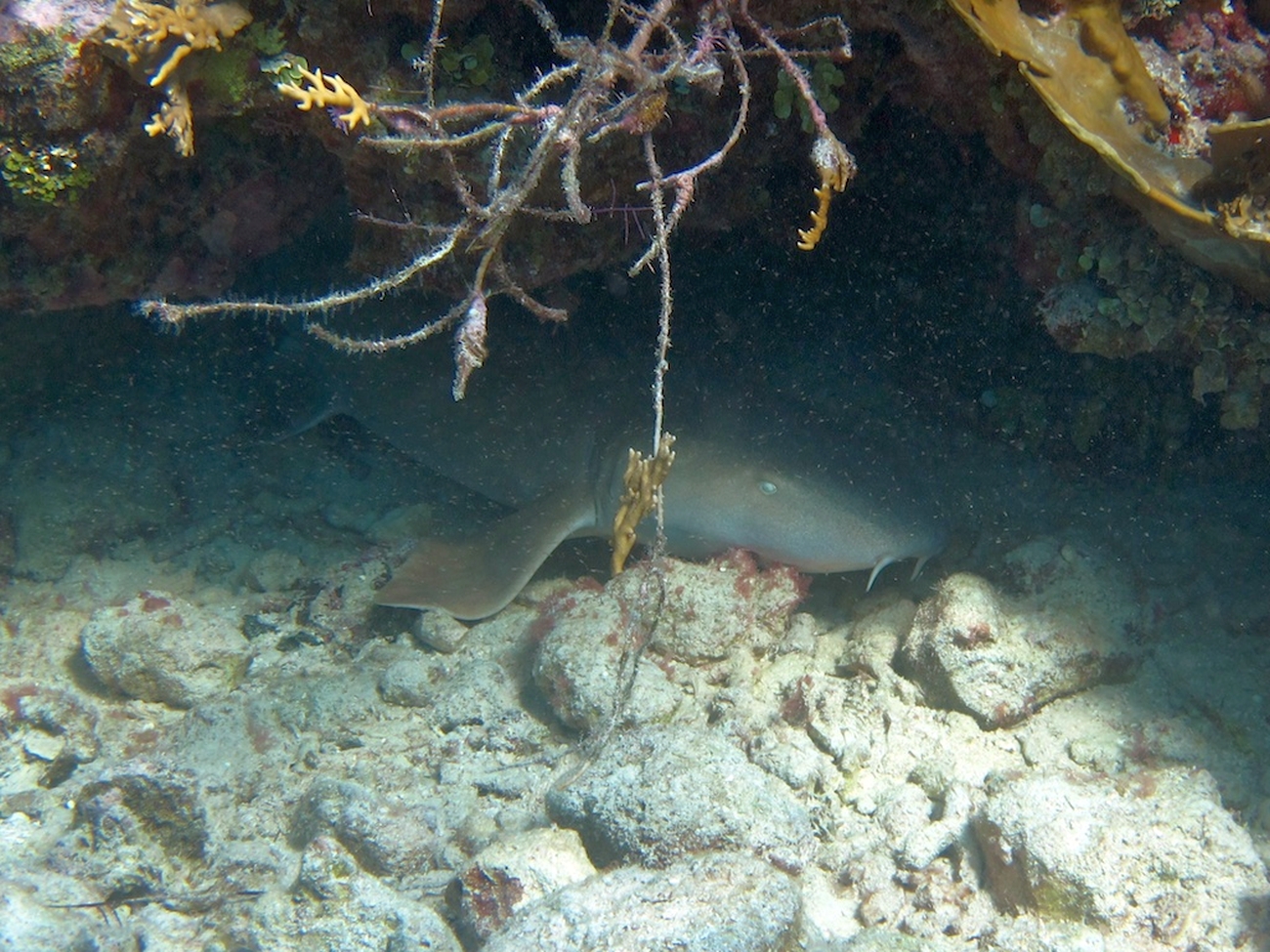
“What do you mean, he’s the Shark Whisperer?”
The bartender grinned slyly as he handed me a halved coconut brimming with rum punch. “I won’t give it away. You’ll see for yourself. Just try not to think of Steve Irwin and you’ll be fine.”
Belizean culture, I had discovered, was a sizzling fusion of Mayan ancestry, colonial influence and Caribbean flair. I was on the island of Caye Caulker, where brightly painted huts sold fried fish on the beach and locals spoke Kriol with a rubbery drawl. Once a sleepy fishing village, the island first became a backpacker haven for hippies following the Gringo Trail in the 1970’s.
Nowadays, Caye Caulker’s primary attraction (aside from its endless supply of colorful hammocks strung between shimmying palms) is its proximity to the Belize Barrier Reef. I had initially planned to dive the famous Great Blue Hole, but scuba excursions proved more expensive than I’d anticipated. And so, not wanting to transform my bank account into my very own Great Hole, I opted to follow the bartender’s advice and snorkel with the legendary Shark Whisperer instead.
I arrived at the yellow hut with the hand-painted sign the next morning at 10 a.m. — the crack of dawn by Belizean standards. I paid my USD$35 to register for the snorkel tour and chatted with a handful of other backpackers until our guide sauntered in at quarter past 11. He was a Rastafarian in his late forties with hip-length dreadlocks that were thicker than cucumbers. Without introducing himself (as the Shark Whisperer or otherwise), he led us down to the pier and onto a small fishing boat with an outboard motor.
The lolling sea was the same shade of brilliant turquoise as the Jell-O shots the bar had served the night before. The sky was stark blue save for a distant smudge of cirrus clouds. As parts of the Belize Barrier Reef are actually connected to Caye Caulker, it only took a few minutes to reach our first snorkeling spot.
“Shark Ray Alley,” our guide intoned as he killed the motor.
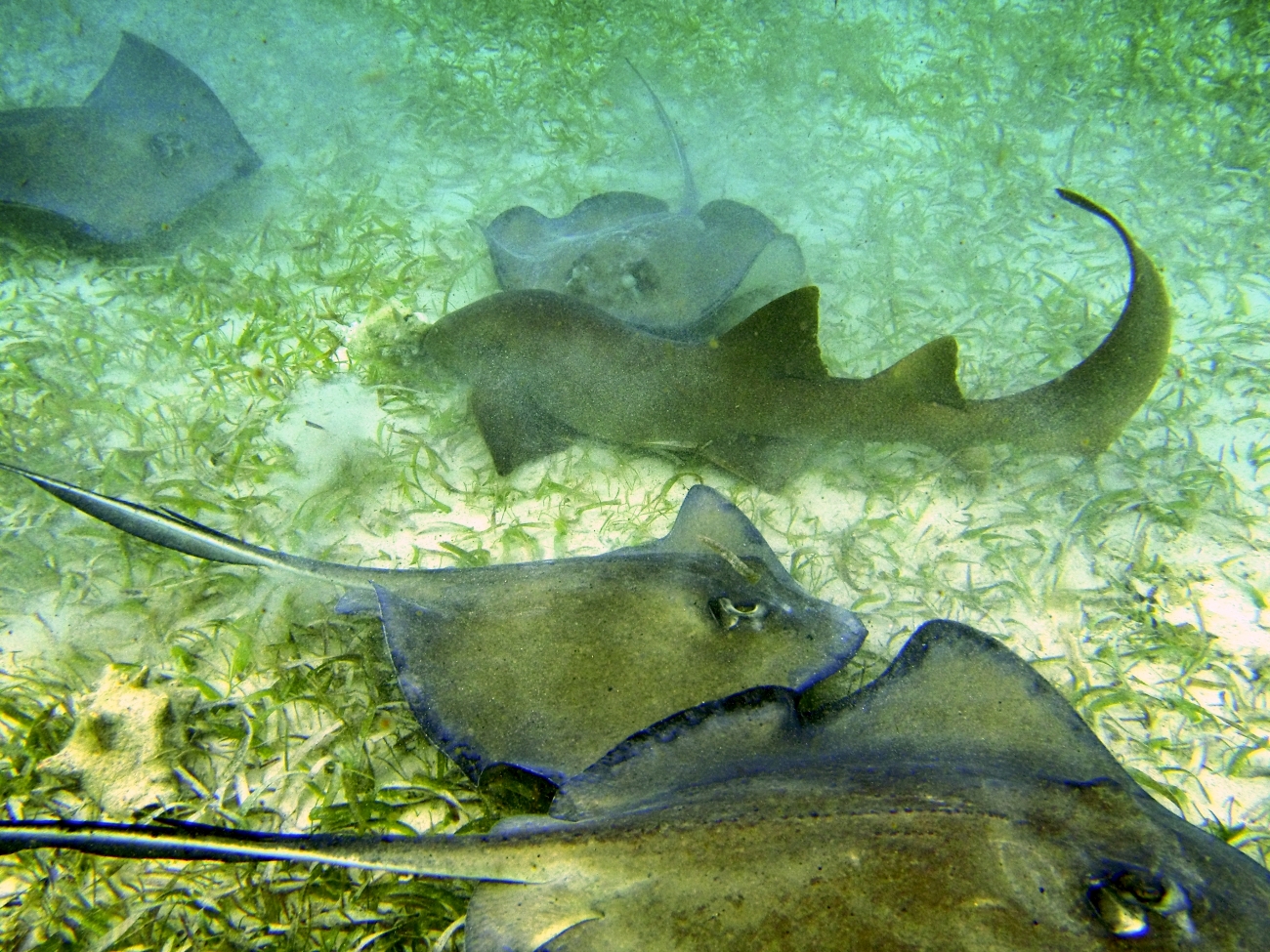
We donned our masks and fins and splashed into the water. It was less than seven feet deep, and I struggled to keep my flippers from making contact with the frying pans that blanketed the ocean floor. Wait—frying pans? I peered closer and realized that they were in fact southern stingrays.
Their bodies were diamond-shaped and ranging between one and five feet in diameter, with shadowy backs, pale bellies and barbed whiptails. Some lay flat against the sand — fluttering skittishly when my fins got too close — while others cruised through the blue like flying saucers.
Our guide slipped into the water beside me without making a splash. Unlike the rest of us — so excited we floundered like the fish of the same name — he moved with gentle grace. His tranquility was soon registered by the animals and a few swam up right beside him, unconcerned as he reached out and slowly stroked their backs
Suddenly, in one swift, controlled movement, he grabbed a stingray by its pectoral wings and held it up to face him. Despite finding itself immobile and arched in a U-position, the animal didn’t appear panicked. As I gawked in disbelief, the guide turned and handed me the ray.
I tried to mimic the Rastafarian’s composure, but my arms trembled uneasily and the ray’s tail began to thrash back and forth. Don’t think of Steve Irwin, I ordered myself. Still, I was unable to calm my nerves and the ray continued struggling, so I let go and watched it dart off into the aquatic ether.
We clambered back into the boat and puttered to our next point: The Channel. This time, our guide chummed the water with chunks of pungent raw fish before we flopped overboard. Within seconds a feeding frenzy ensued. Nurse sharks with moustache-like barbels slithered over one another with such fervor I thought for sure they were attempting to climb into the boat. Just when the commotion was at its zenith, our guide slid down into the heart of the action and gestured for us to follow suit.
I recalled that nurse sharks were mostly harmless, but that didn’t prevent the Jaws theme from echoing in my ears as I splashed into the water. Leathery skin writhed against my torso and a dorsal fin caught me sharply in the armpit. Once again, the guide tenderly caressed the fish. All of a sudden, he grabbed one of the animals in a giant hug. He wrestled with it for a few seconds before seizing its snout and flipping it onto its back.
The shark fell instantly into tonic immobility — a paralytic state which can be induced either by flipping the shark over or by rubbing its snout. Our guide relaxed his grip until he was cradling it like an infant before yet again passing the animal over to me.
My heart pounded as I embraced the nurse shark. Its spine was stiff yet it was completely still, as if in a state somewhere between rigor mortis and nirvana. As the sunlight streamed into the shallows, I found myself conflicted between the serenity of connecting so intimately with nature and the terror of clutching a real live shark (even if it was only a nurse shark).
I glanced up and discovered that our guide had wrangled enough sharks for everybody to hold. I smiled, inviting a rush of seawater into my mask. He really is the Shark Whisperer, I thought to myself.
Now, how the heck do I let go of this thing?
By S. Bedford
[Nurse Shark by jE norton/Flickr; Stingrays by Antti T. Nissinen/Flickr]

ABOUT THE AUTHOR
 S. Bedford is from Toronto, and has backpacked over 50 countries. Her skills include navigating a wide variety of toilet styles, miming “vegetarian” and choosing the bed that doesn’t have bedbugs. She is currently writing a novel about her travel misadventures. (@sbedford86)
S. Bedford is from Toronto, and has backpacked over 50 countries. Her skills include navigating a wide variety of toilet styles, miming “vegetarian” and choosing the bed that doesn’t have bedbugs. She is currently writing a novel about her travel misadventures. (@sbedford86)
The post The Shark Whisperer Of Belize appeared first on The Expeditioner Travel Site.
]]>The post 12 Stunning Panoramic Photos Of Maui appeared first on The Expeditioner Travel Site.
]]>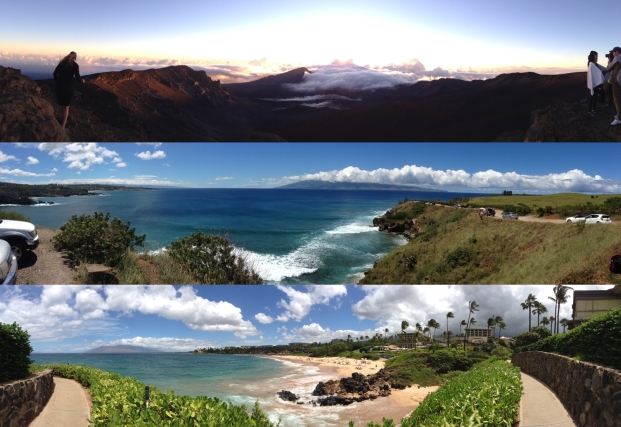
I normally don’t take my cell phone with me while traveling (as I recently wrote about prior to my trip to India). This is due to a wide variety of reasons including the cost of buying local SIM cards and topping them off with data plans, the potential for sticking out as a target for theft — particularly in high-crime countries and cities, the distraction phones create while you should be enjoying your new surroundings, and the very basic fact that up until recently, I had little need for instant access to phone calls, texts or the internet since I didn’t want to be bothered with these things while traveling (as a rule, while traveling, everything can wait).
However, during my most recent trip to Maui in September, I decided to bring along my iPhone 5 since it wouldn’t involve any issues with roaming, SIM cards or theft (most honeymooners on Maui have far more interesting things on their mind than swiping electronics).
As I look back, it was nice to be able to stay in constant contact with the other people I was traveling with, and sending out instant tweets, uploading pictures on Facebook and Instagram, and using Google Maps and Yelp for navigation and restaurant recommendations provided a fun way to both share my trip with my friends as I went along, as well as to make the traveling itself go quite a bit smoother (goodbye unmarked black-and-white maps in Lonely Planet, hello Google Maps!).
But the real highlight of taking my phone along with me was using the iPhone 5’s amazing camera. Though I had my DSLR on me the entire time, I ended up using it almost exclusively for video and pulling out my iPhone for photos, both for its easy-to-use white balance feature (I’m still trying to figure out how to do that on my Nikon), as well as for the ability to easily upload my photos to my various social networks.
I also got to playing around with the panorama feature of the phone, something that in the past I had mostly dismissed as gimmicky and not for “serious” photography. However, when you’re on an island where you are constantly surrounded by pure and unadulterated beauty, it’s hard to capture everything you are seeing in a limited 3:2 ratio. So I started selecting the panorama option once in a while to see how the images would come out, and I was more than surprised with the results once I got home and was able to look at them on my computer.
The Photos
The following are a selection of some of my favorite panorama pictures during my trip to Maui. I decided to post the photos with absolutely no filters or post-processing done to them. I know that in the age of Instagram this is nearly heretical, but I wanted to present an accurate and unfiltered reflection of the beauty of the island, without a reader wondering to themselves, “I wonder what it really looks like?”
Also, most of these images were several-thousand-pixel wide in their native format; much too wide to be displayed on most monitors, let alone a standard web site like my own. Therefore, the images on this page have been scaled down to the width of 582 pixels to fit the page. But, if you click each image, a new tab will open and you can view each image in a much wider 1600-pixel-wide format.
Haleakalā Sunrise
The main highlight of visiting Haleakalā, the active volcano that makes up 75% of the island of Maui, is the memorable views of the sunrise as the sun rises above the perpetual cloudcover that sits below the peak of the volcano. This photo shows the vista about 20 minutes before the sun comes up.
Haleakalā Sunrise 2
The above picture shows the amazing colors that begin to form on the clouds shortly before the sun breaks free from the horizon.
Haleakalā Summit
Most people watch the sunrise from the viewing area just outside the visitor’s center, then turn around and head back to warmer environs. However, if you head just a little further up the main road, you will find the actual summit, complete with views of Hawaii (The Big Island) — along with views of its many observatories — in the distance, as well views of the Maui coastline along Wailea, the main town of Kahului, as well as the numerous telescopes off to the edge run by the University of Hawaii as well as the Air Force (one telescope allegedly tracks every object in the orbit larger than a basketball).
Honolua Bay
Located just north of Kapalua, Honolua Bay offers one of the most spectacular views of the pristine waters surrounding Maui. Off in the distance you can see Moloka’i, and on most days, down below in the water you will likely see scores of surfers, as these are some of the best waves for surfing in the world.
Honokohau Bay
Heading north and east from Kapalua along Route 30 you will find many beautiful bays and inlets along the coastline, many of which you can park near and explore by foot. This one, Honokohau Bay, had a small shack nearby where you can buy a coconut from a woman who will slice it open for you on demand.
Biking Down Haleakalā
The problem with visiting Haleakalā to see the sunrise in the morning is that you are in total darkness the entire time. To really take in the views, rent a bike from the many companies that offer it (such as Haleakala Bike Company). They will provide you with a bike, helmet and jacket, and drive you up past the treeline, where you can then cruise down the quiet roadway at your own pace.
About halfway down, stop in Makawao, the famed “cowboy town, for lunch to refuel. Friend of the TheExpeditioner.com Kyle Ellison’s parents own Polli’s, the town’s best Mexican joint, where you can load up on giant burritos and potent margaritas. (Editor’s Note: This site does not advocate mixing Margaritas and downhill volcano bike riding in any manner.)
Sunset from Wailea
Sunsets along the entire western portion of Maui are simply breathtaking, and those as seen from Wailea are no exception. This was my view during cocktail hour before the night’s luau festivities got going.
Sunset from Wailea 2
Then, once the sun hits the horizon, the colors in the sky dramatically change, projecting shades of pink, blue and orange all around you.
Luau in Wailea
The problem with bloggers is that they’re always playing with their phones and cameras. That’s Megan McDonough of Bohemian Trails and Ryan Van Duzer of Duzer.TV ignoring the very interesting, highly entertaining luau taking place.
This particular Luau, Te Au Moana (or “The Ocean Tide”), takes place on the lawn of the Wailea Beach Marriott Resort & Spa, and includes a free lei, a massive buffet with baked Kalua Pig as the centerpiece, more piña coladas than one should ever be allowed to drink at any event that includes fire, as well as one of the more authentic Polynesian dance performances on the islands.
Polipoli Spring State Recreation Area
Given the natural beauty that surrounds you, it makes sense that parasailing would be excellent in Maui, as it offers a once-in-a-lifetime view of the island (as seen strapped to the front of a Brazilian man tethered to a small piece of nylon being used as a sail in my case). This view is from Polipoli Spring State Recreation Area, located about halfway up Haleakalā, which is where I met up with my particular paragliding guide, Proflyght Paragliding, Maui’s oldest and only full-time paragliding school in Hawaii (and run by Dexter Binder, pictured here with a mallard duck).
The Four Seasons, Wailea
The Four Seasons Resort Maui at Wailea, pictured at the top right above, is the gold standard for luxurious resorts on the island, and it sits above one of the many picturesque beaches in Wailea, most of which are accessible by foot along the Wailea beach path. Early in the morning is nicest, and as lunch rolls around, the trade winds tend to pick up, with the palm trees bearing the brunt of its force.
Lana’i and Kahoʻolawe from Waiela
Looking in the other direction along the path you can see Lana’i off to the right and the uninhabited island of Kahoʻolawe to the left (with the diving-friendly Molikini Island Preserve just in front of it). Along the path they have focused on planting and maintaining all native species of plants, a stark contrast to much of the island that has since been planted with other non-native varieties over the years.
By Matt Stabile

ABOUT THE AUTHOR
 Matt Stabile is the founder and Editor-in-Chief of TheExpeditioner.com. You can read his writings, watch his travel videos, purchase the book he co-edited or contact him via email at any time at TheExpeditioner.com. (@TheExpeditioner)
Matt Stabile is the founder and Editor-in-Chief of TheExpeditioner.com. You can read his writings, watch his travel videos, purchase the book he co-edited or contact him via email at any time at TheExpeditioner.com. (@TheExpeditioner)
The post 12 Stunning Panoramic Photos Of Maui appeared first on The Expeditioner Travel Site.
]]>